
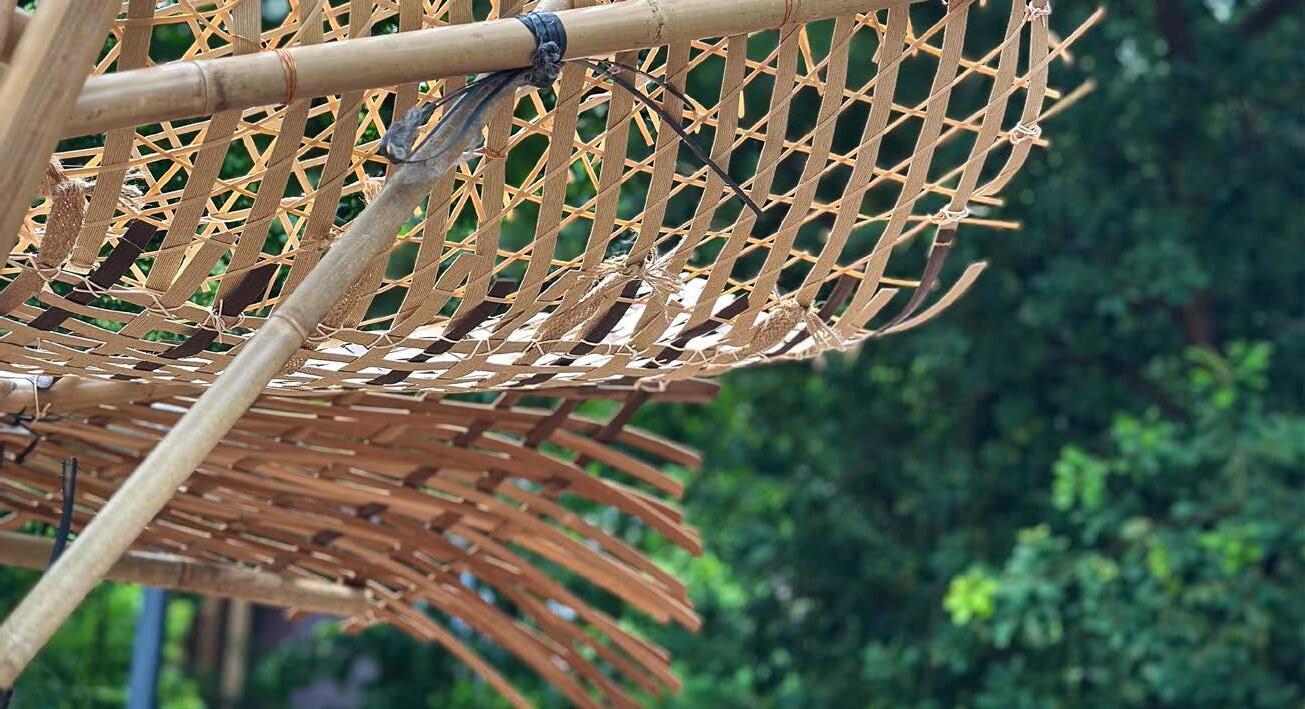



Today, where finite resources, various species, and distinct cultures are at risk, landscape architecture plays a vital role in achieving a sustainable future.This multidisciplinary field combines principles from architecture, arts, urban planning, conservation, and ecology to support the design of our diverse built environments. The Career Discovery in Landscape Architecture (CDLA) seeks to explore the foundational concepts of this discipline through a unique experiential learning, to discover its potential and significant role for our everchanging societies.
Landscape architecture documents analyses, studies, envisions and re-thinks the interaction between nature and the built environment. For this year, the CDLA2025 proposes the framework - [IN]MATERIAL - exploring the tangible and intangible layers of nature and the built environment through design.

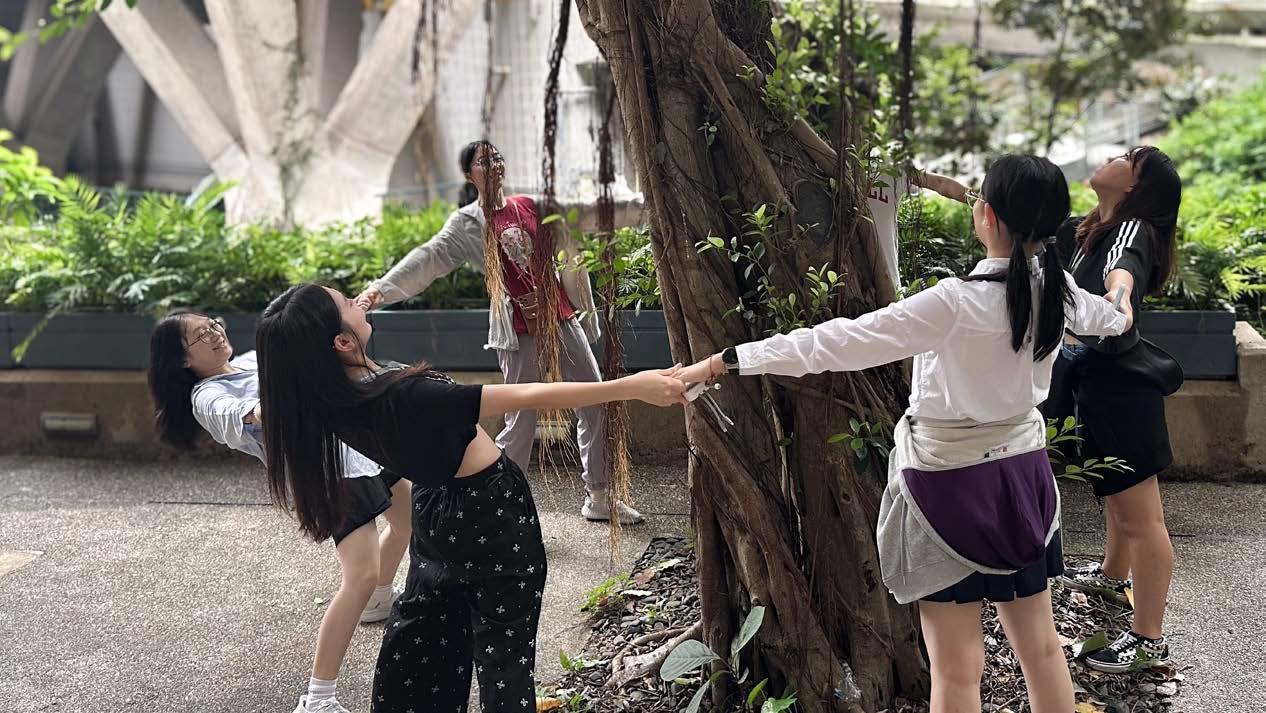

MODULE A
#nature Why is nature important to you?....................................................
MODULE B
#urbannature What is the nature-city relationship? ..............................................
MODULE C
#ruralnature Whose nature?.............................................................................
MODULE D
#biodiversity What is living nature? ...................................................................
MODULE E
#landscapearchitecture What is landscape architecture? ..................................................
WEEK 1
MODULE A Day 1
Why is nature important to you?
MODULE B Day 2-3
MODULE C Day 4-5
What is the nature-city relationship? #urbannature
Whose nature?² #ruralnature
MODULE D Day 6-7
WEEK 2
MODULE E Day 8-9-10
What is living nature? #biodiversity
What is Landscape Architecture? #landscapearchitecture
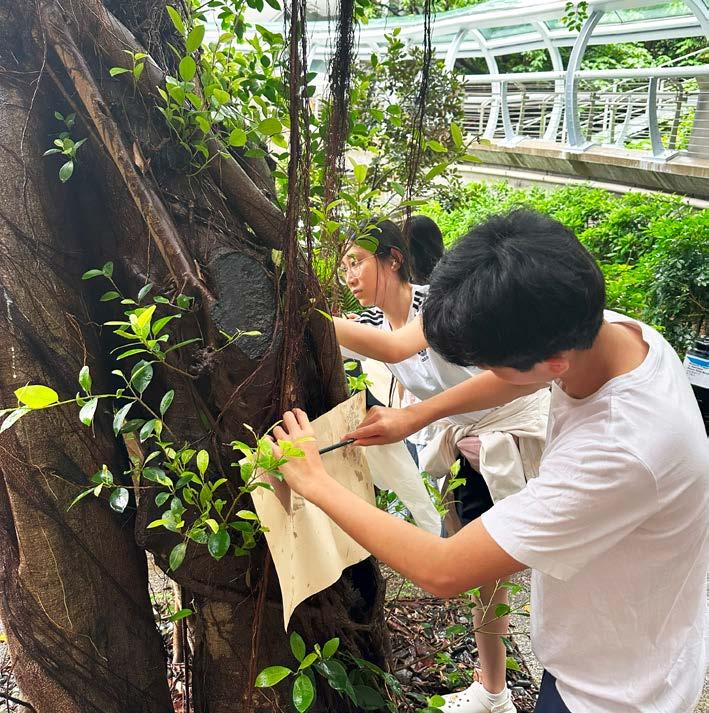
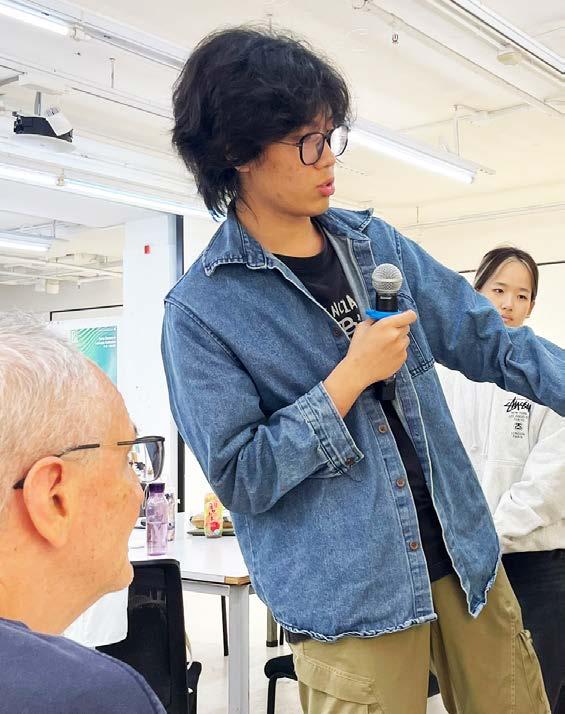
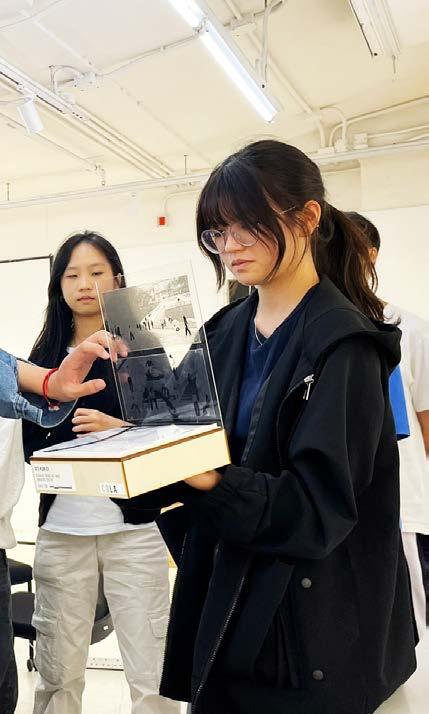
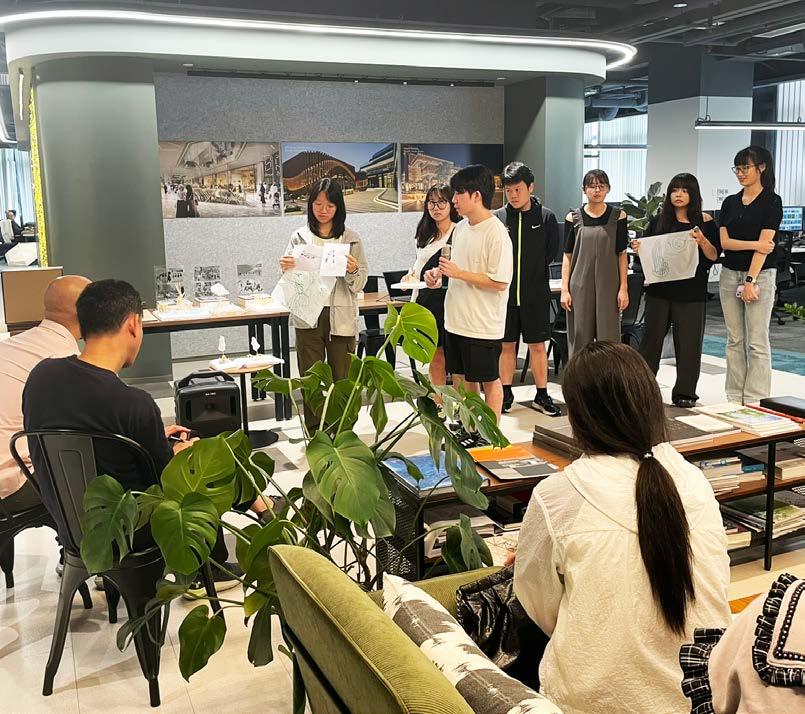
Activities across the program allowed students to reflect on the embedded significance of nature along with the examination of the physical properties of the built environments through design. The course learned from the ecologies and actors involved in the making of the Hong Kong landscapes.
In the first module, peer-to-peer interaction helped students to reflect on their thoughts around the significance of nature and get along. From class to campus, they explored the legendary buildings of HKU and learned how to document physical aspects of assigned sites through the use of diverse art techniques.

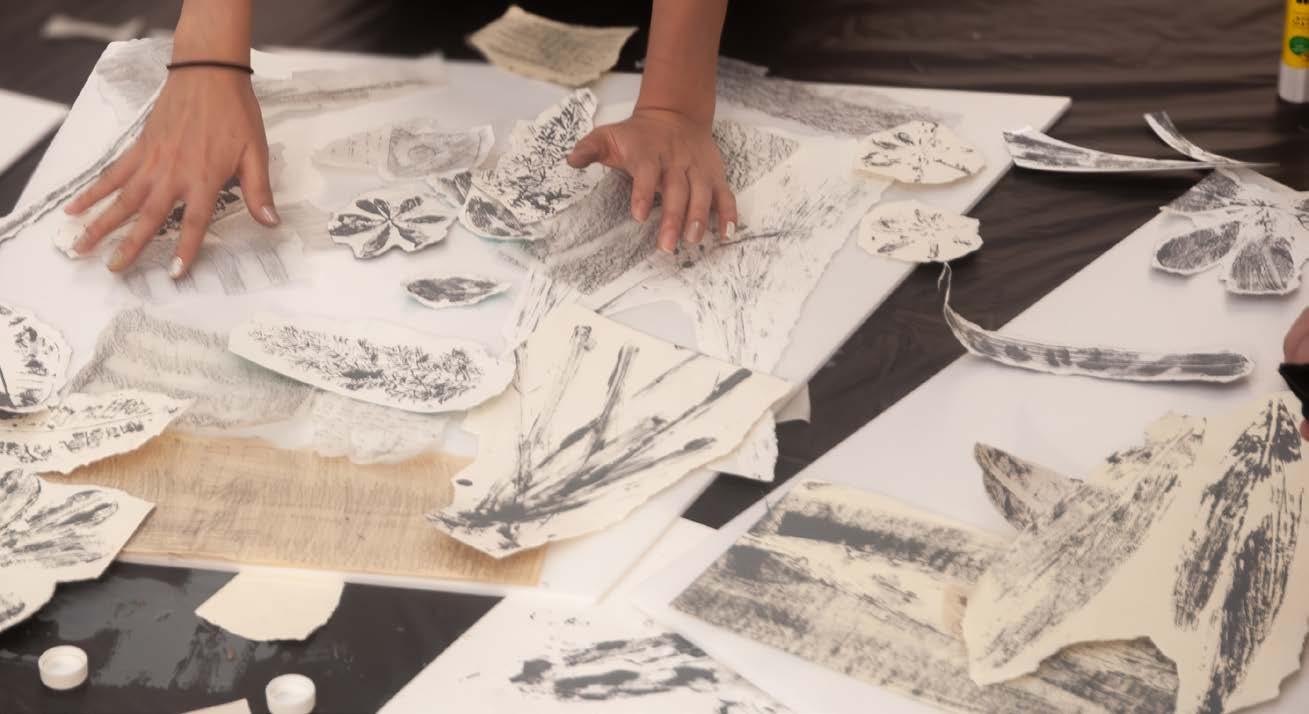
Students worked in pairs and responded to the question -Why is nature important to you? -
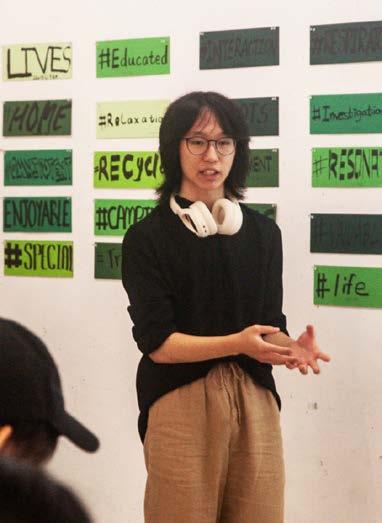
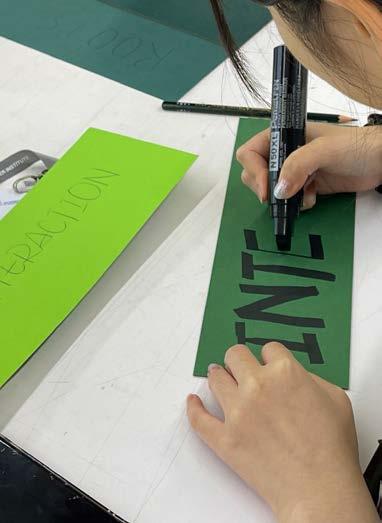

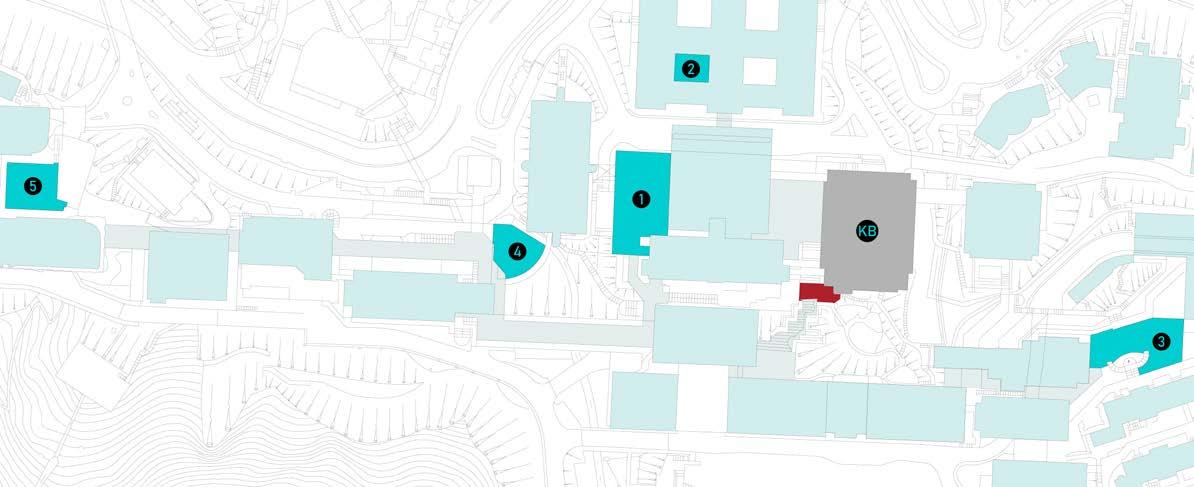
Site 1: Area outside the Main Library main entrance, 2/F, HKU
Site 2: Southwest Courtyard, Main Building, HKU
Site 3: Plaza at Chong Yuet Ming Amenities Centre, HKU
Site 4: Central gate access next to Kadoorie Biological Science Building, HKU
Site 5: Centennial Campus, G/F HKU
Knowles Building, HKU
Sun Yat-Sen steps podium, HKU
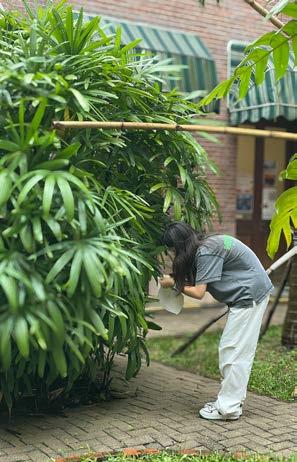

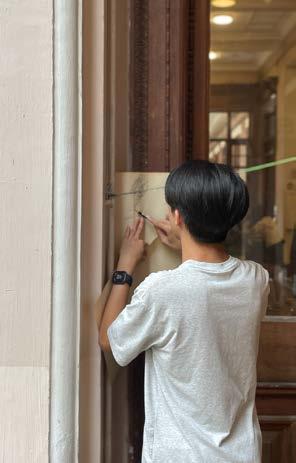
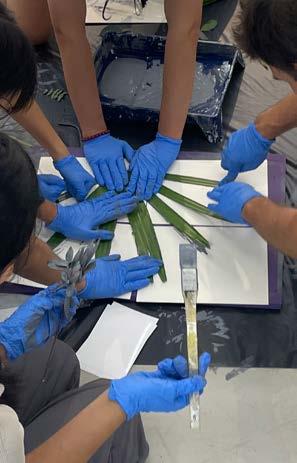
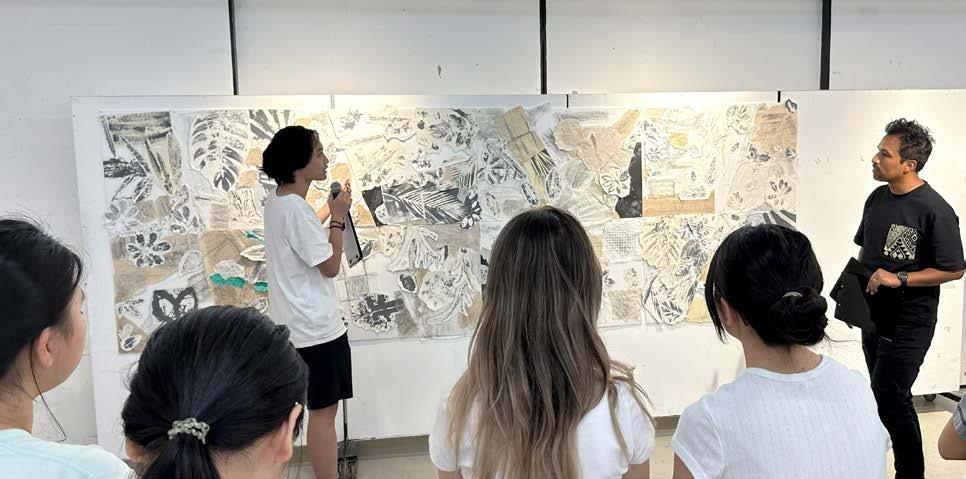
Students created a large collage delving into aspects related to composition, hierarchy and scale. All the production was curated to map materials – nature and human texture, nature and human patterns, nature and human body.
This module explored public spaces along with the function and value of regional plants species. Students delved into the relationships between nature and the built environment. The module ended up with the development of a public space intervention led by a local practicioner.
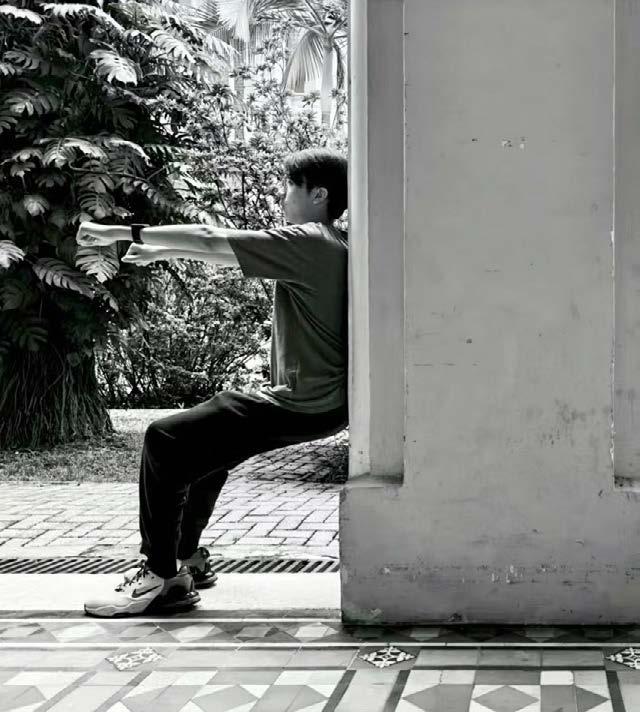
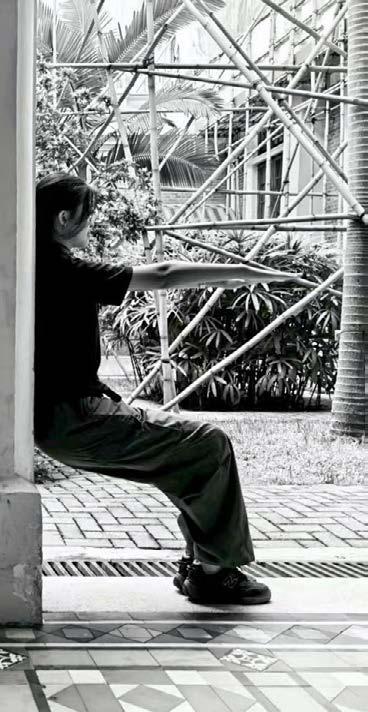
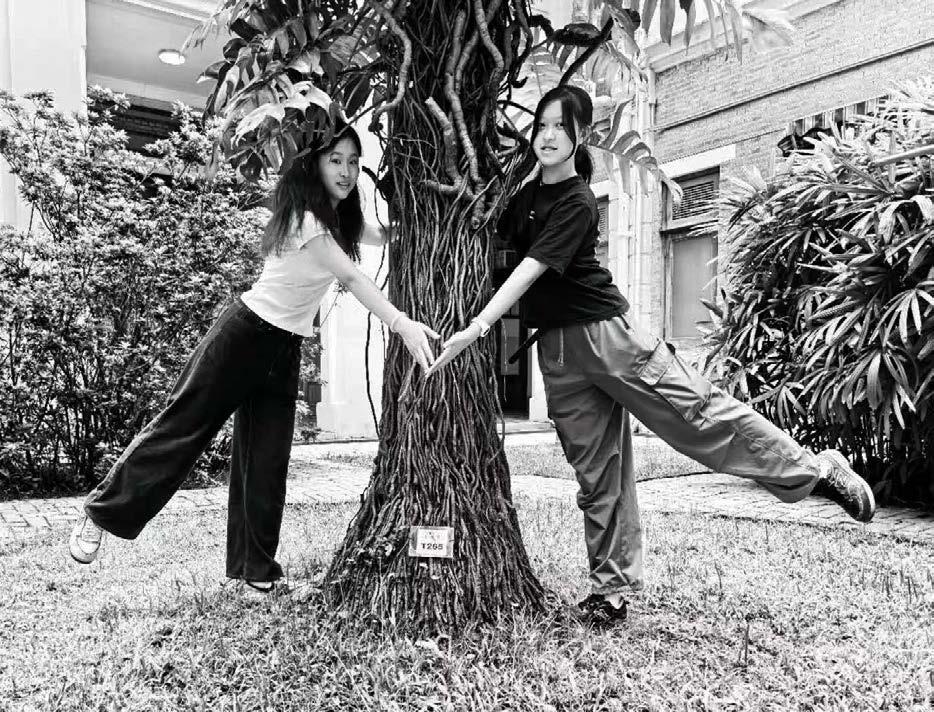
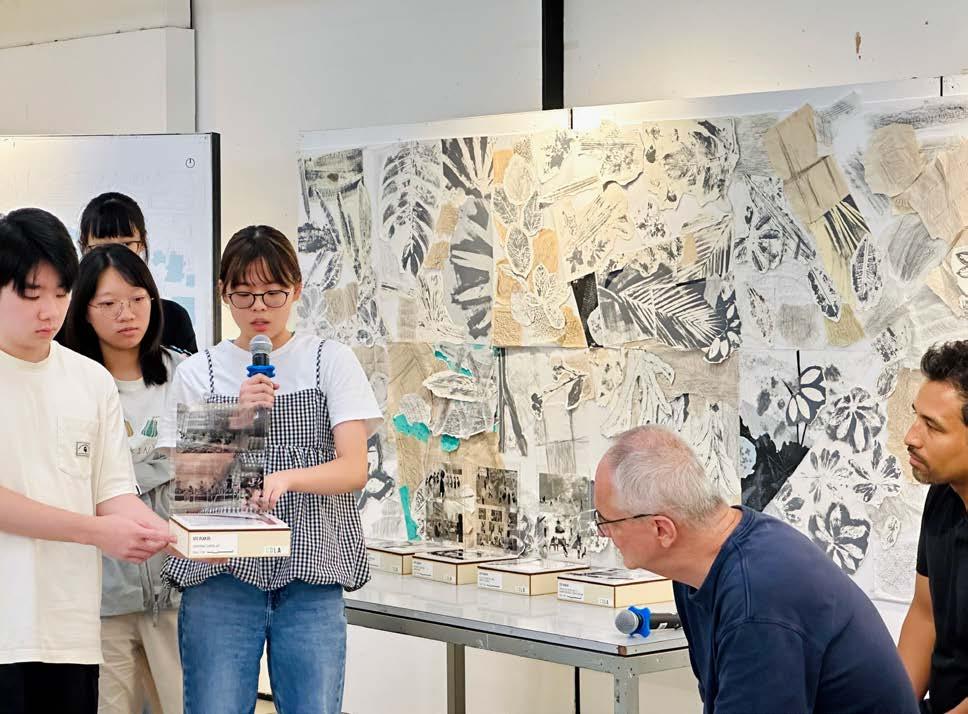

Documenting through photographs, each group applied representation techniques to produce a descriptive box reflecting on the analysis of the asigned site in the HKU Campus.
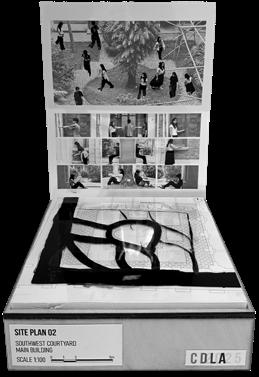
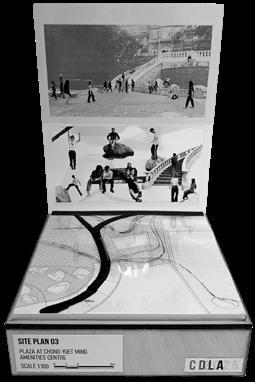
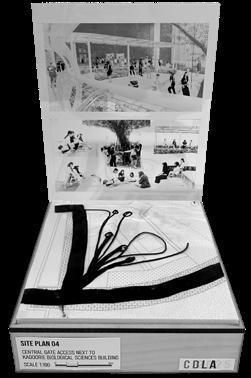
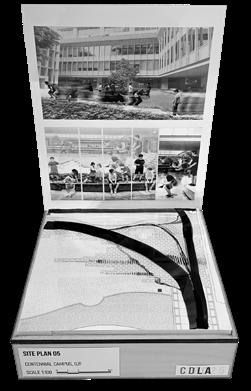
Group 2 / Explorers /
Group 3 / Slay /
Group 4 / Palms /
Group 5 / Gaia /
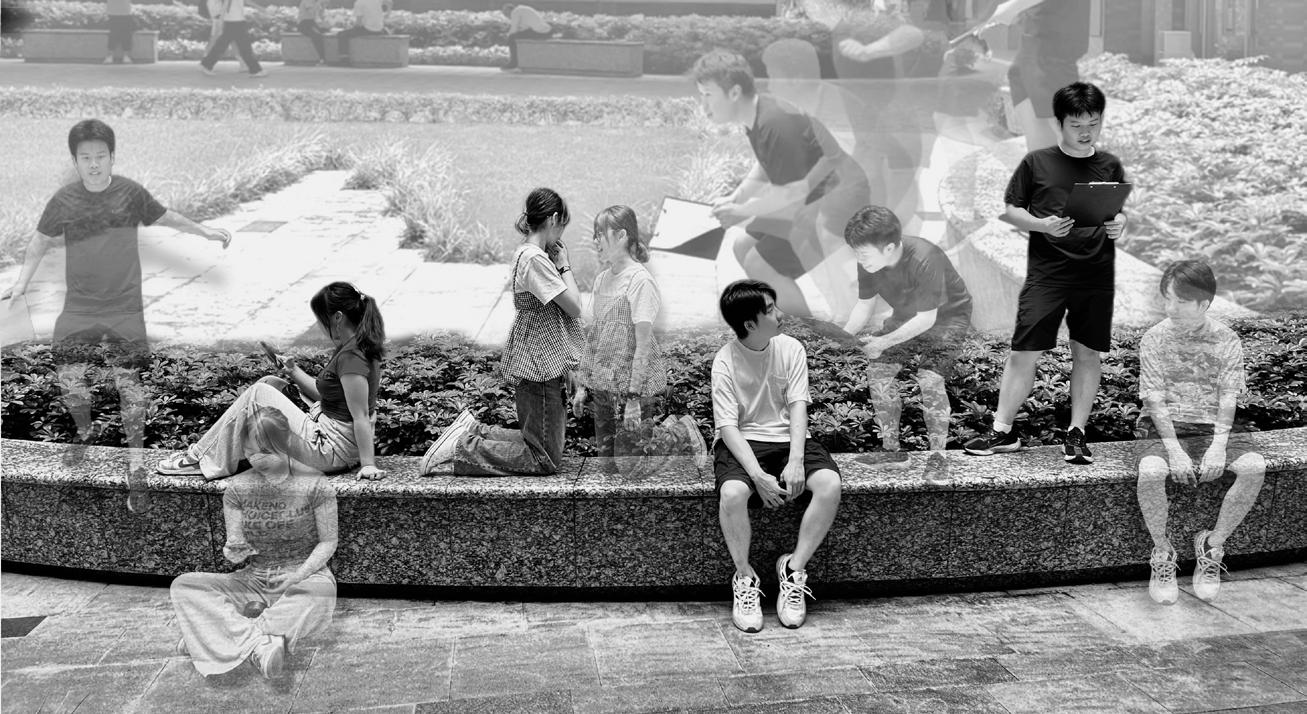
Students delved into the aspects of human scale and movement, because we are not static entities. Bodies are always navigating and using spaces. Objects/artifacts can be defined by our own understanding of their use, which might be embedded in our cultural backgrounds

#urbannature
/MAPPING MOTION
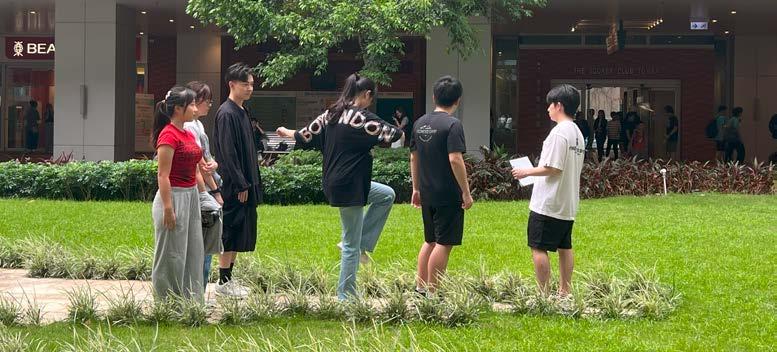

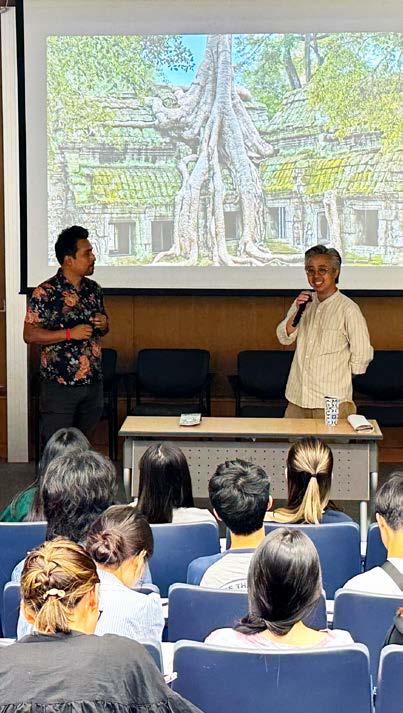
Students reflected on the role of nature in the city. From aesthetic perceptions to historical significance, they examined the relationships between plants and public spaces.
Symbolism of plants, Lecture by Dr. Yin-Lun Chan
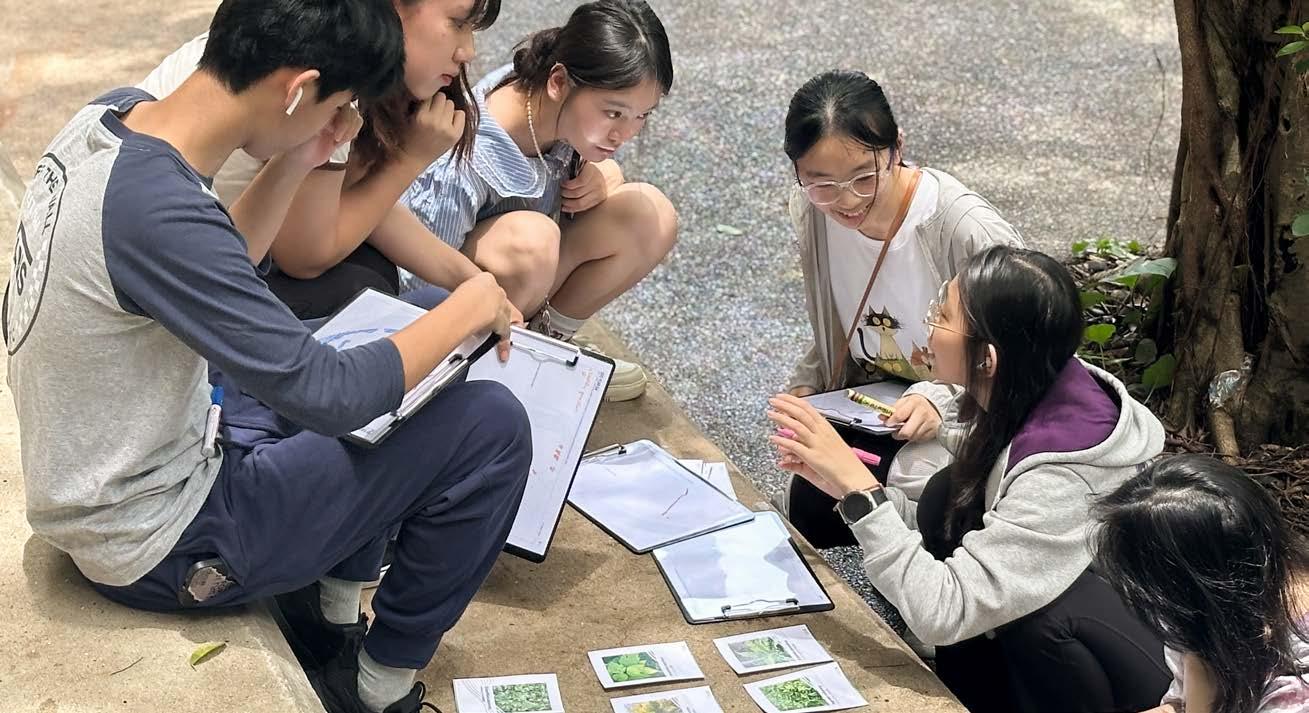
Plant Species Identification across the HKU Campus
‘Tropical Asias’ took students to map and learn the concepts of endemic and exotic vegetation in South East Asia. In active discussion with peers, they identified plant species.
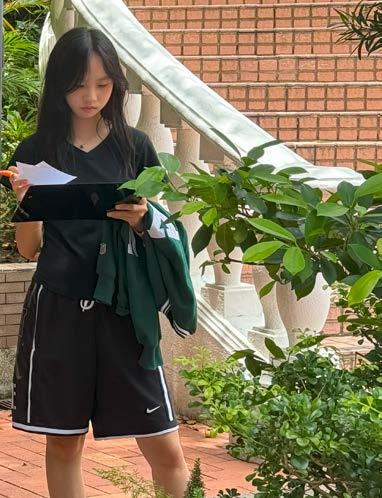
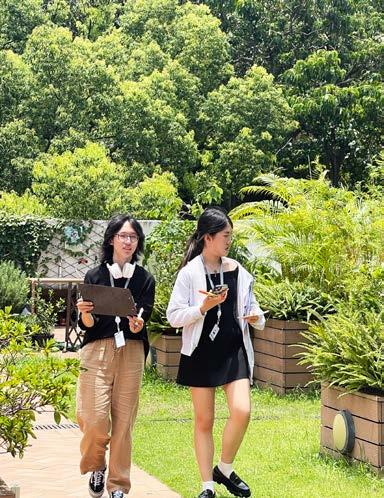

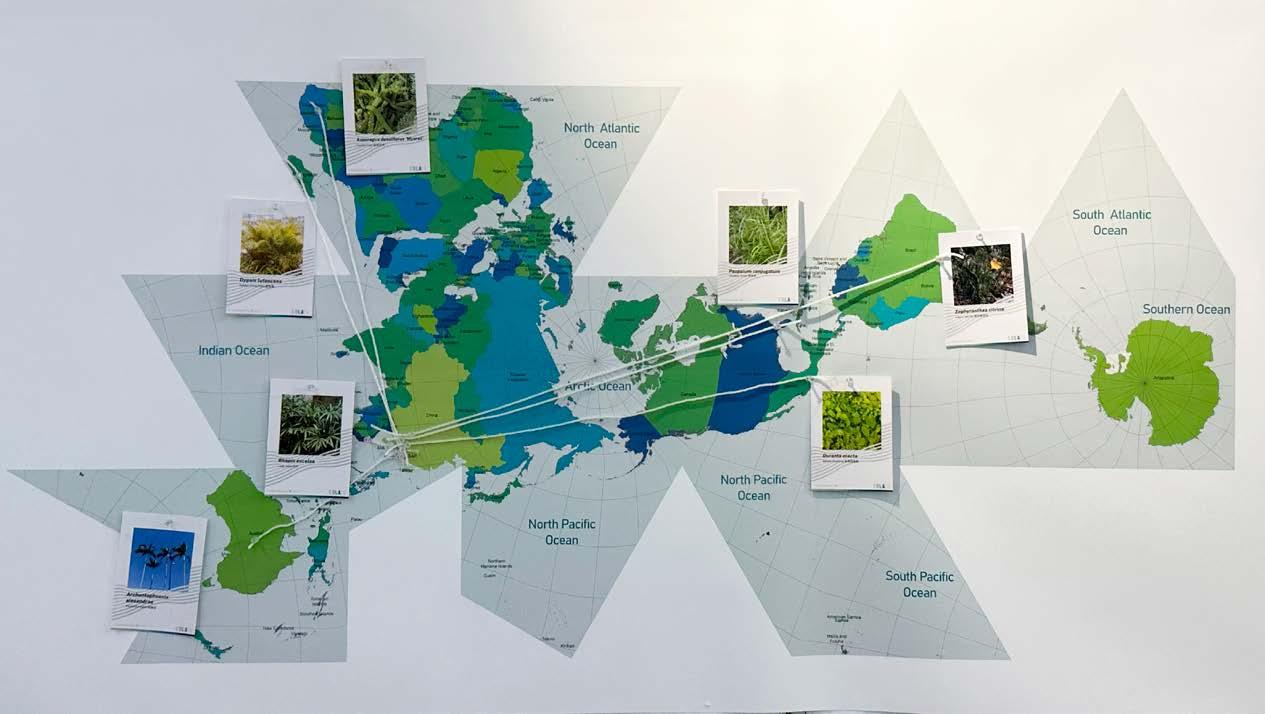
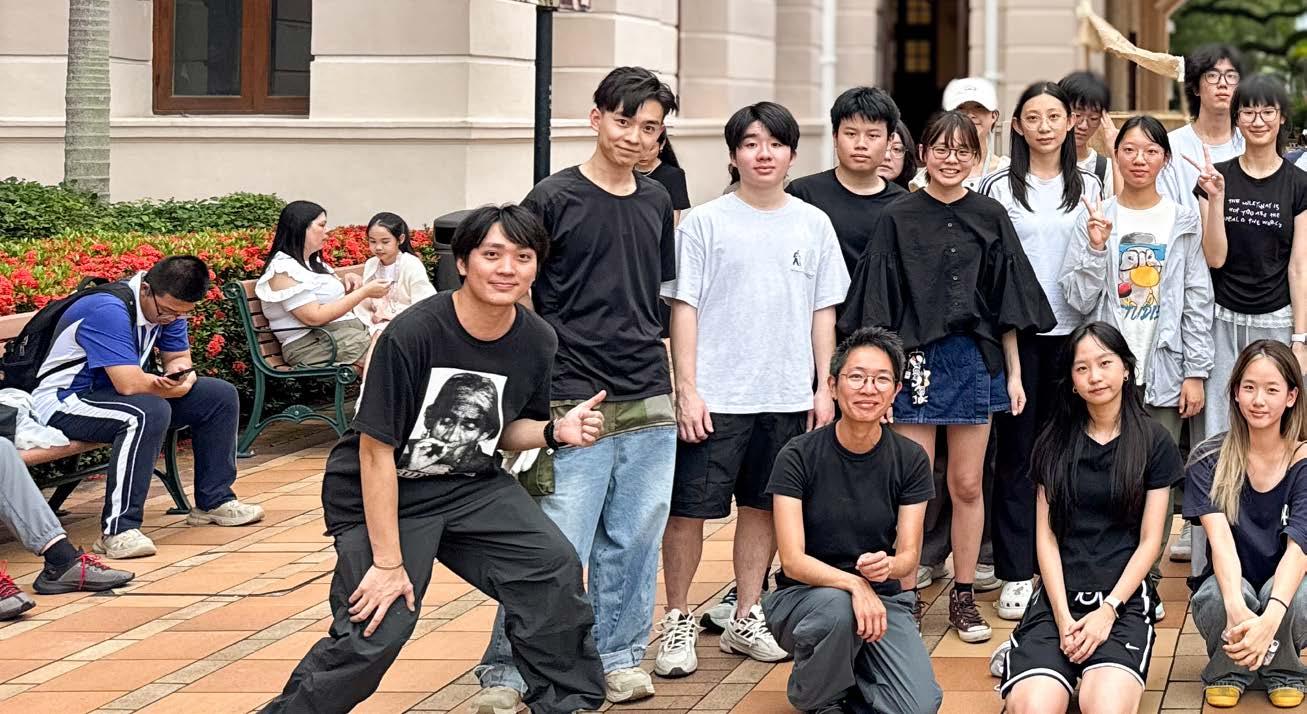

Based on guided site analysis on key topics related to urban and nature, namely site access, site programming, microclimate and natural resources, students learnt to derive site strengths and weaknesses which informed an open space design.
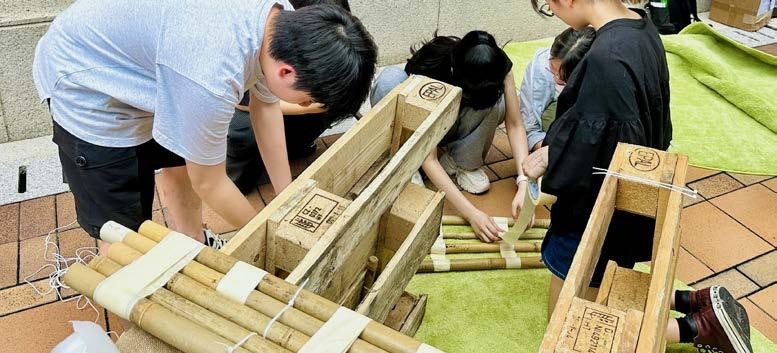
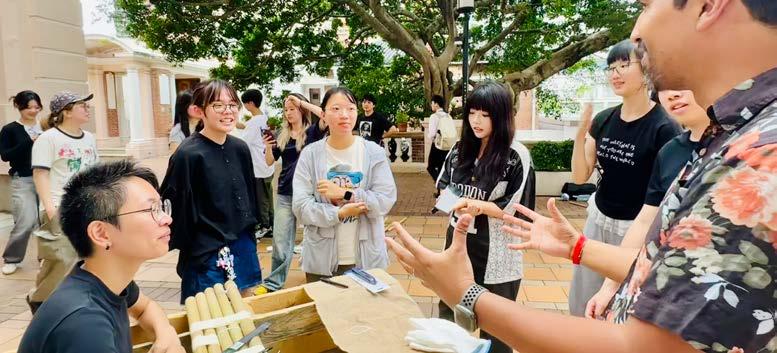

#ruralnature
Learning from individual, local and global initiatives, this module examined the role of the landscape architecture discipline to preserve and enhance ecosystems at different scales.
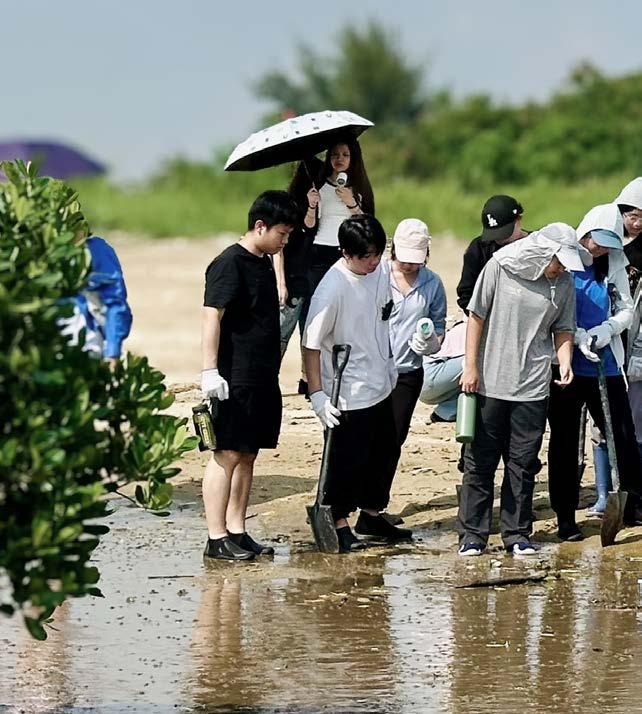
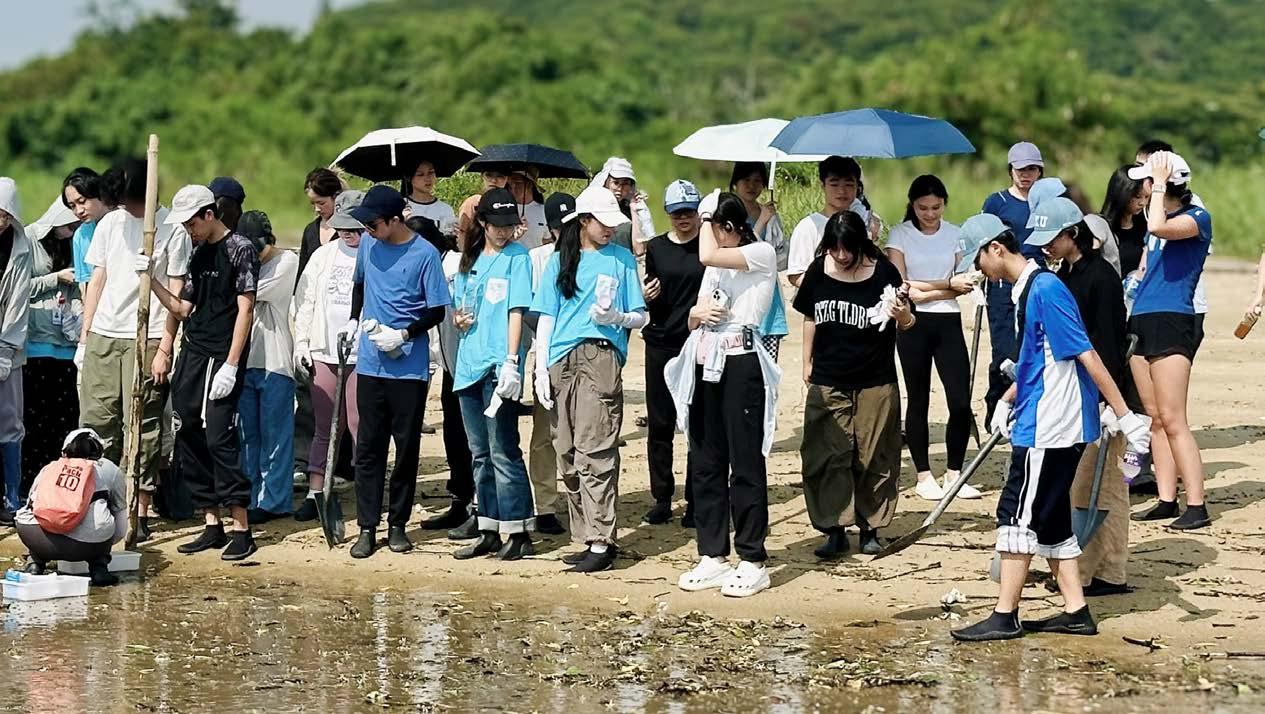
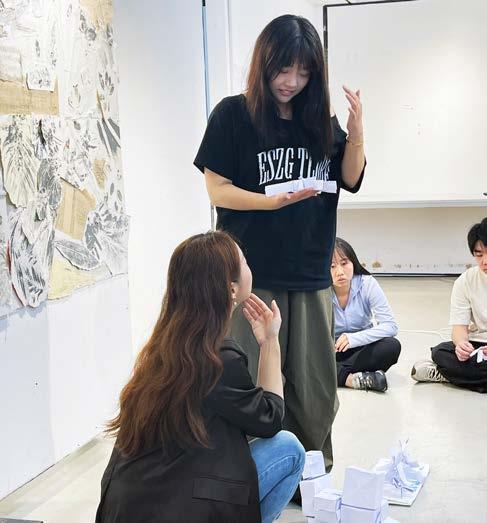
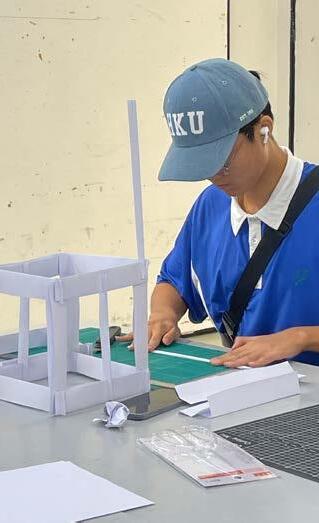
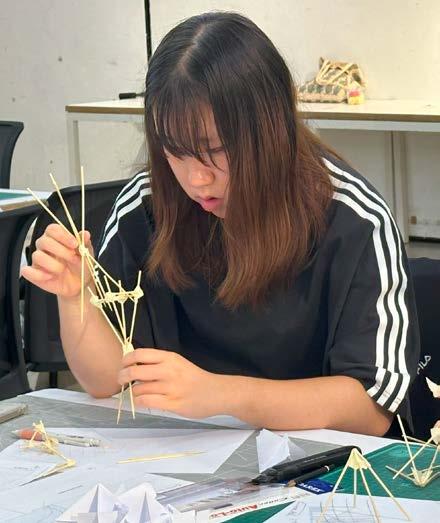
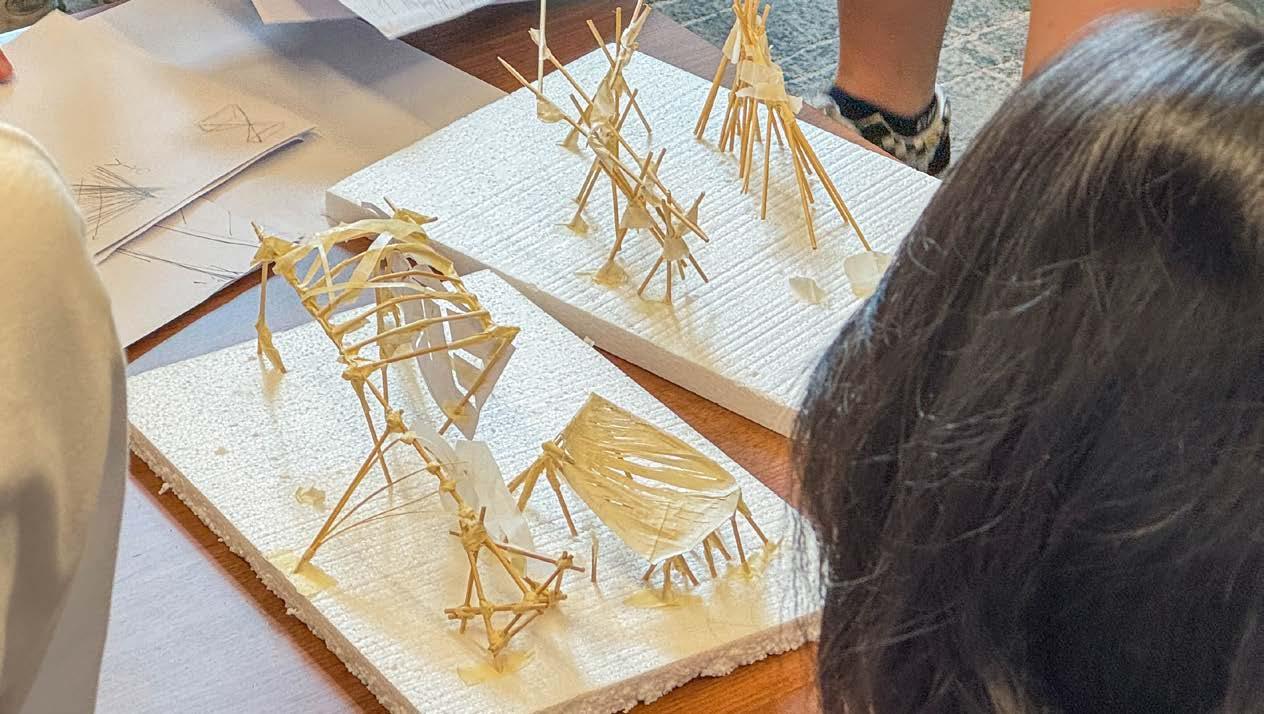
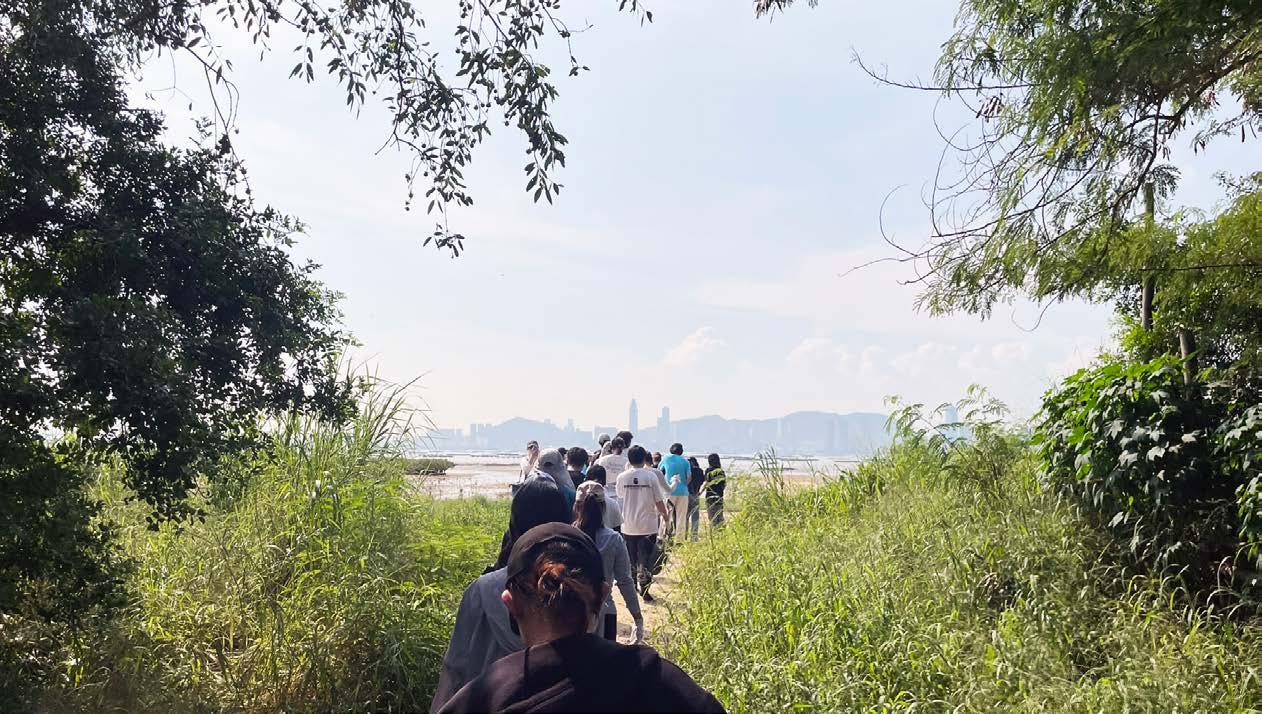
Students contributed to restore the crucial habitats of the Northern Coast. The Nature Conservancy Hong Kong underscored the importance of preserving and regenerating biodiversity.
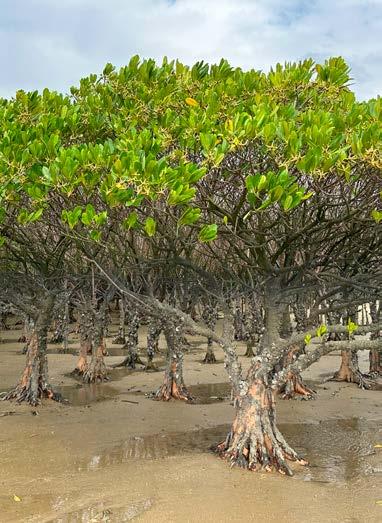

/OYSTER
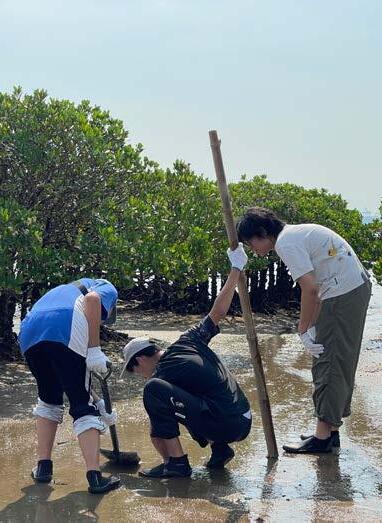
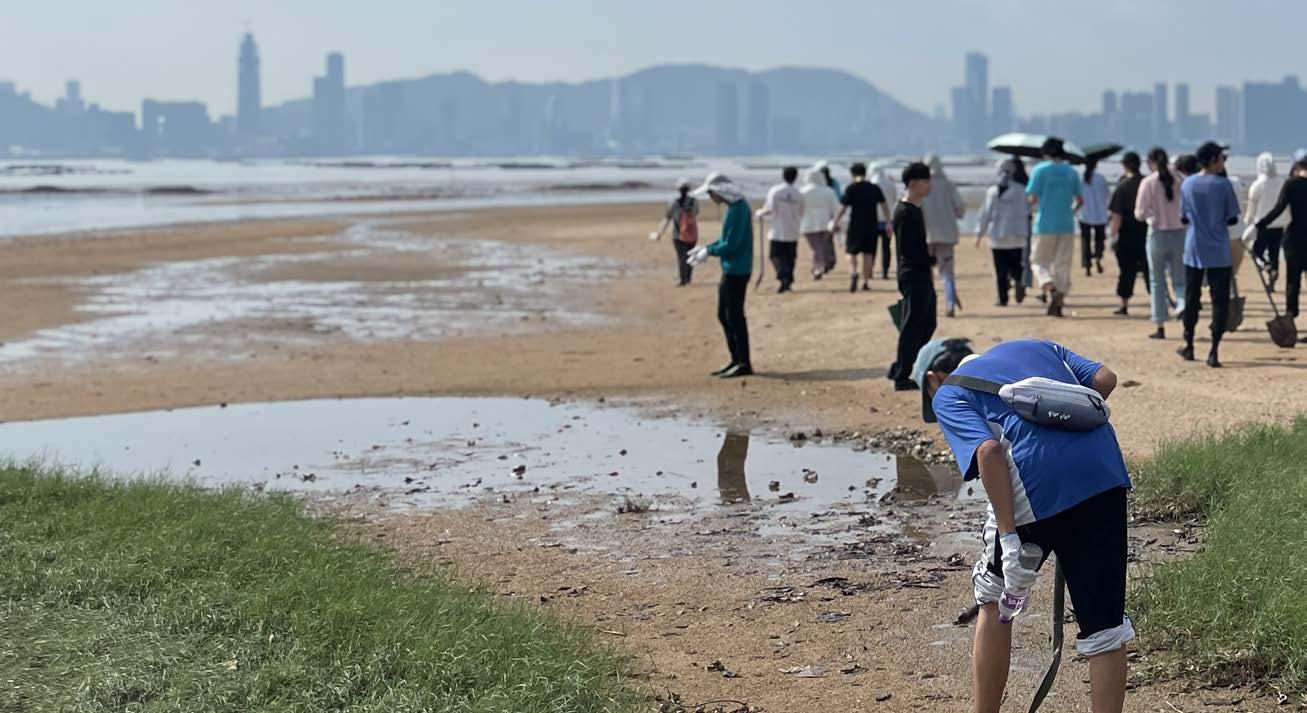
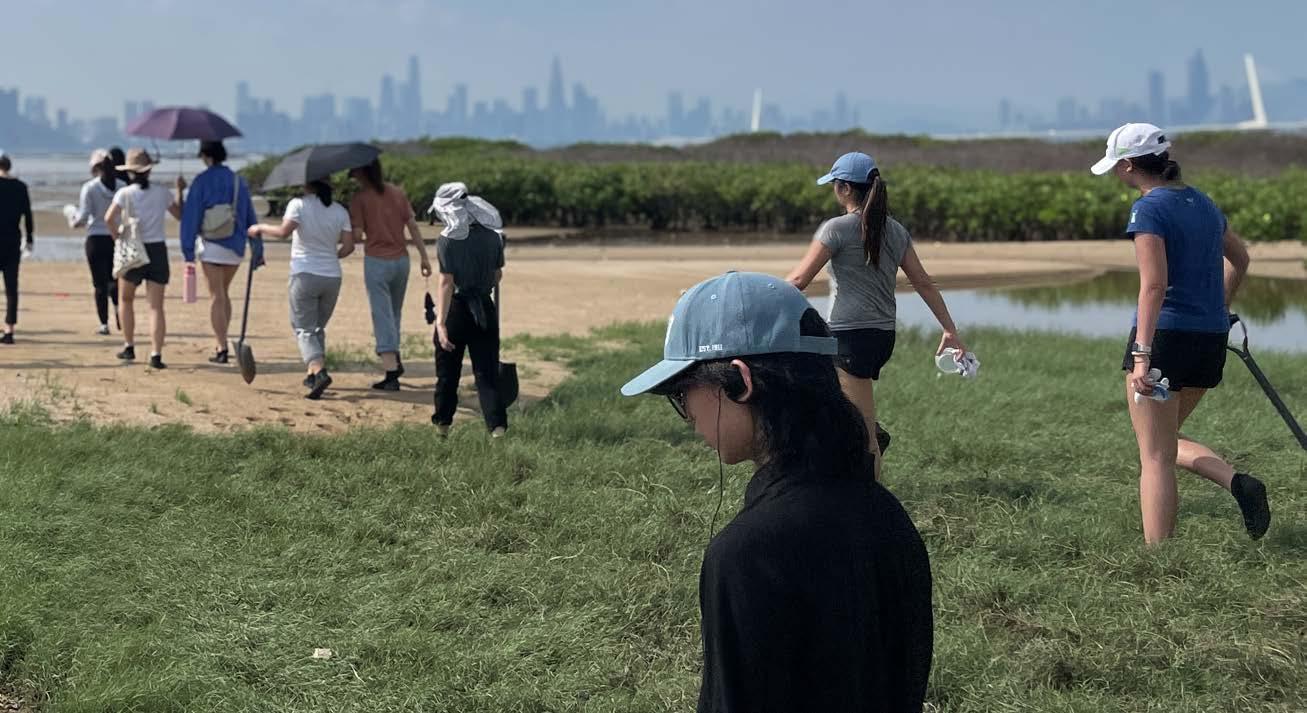
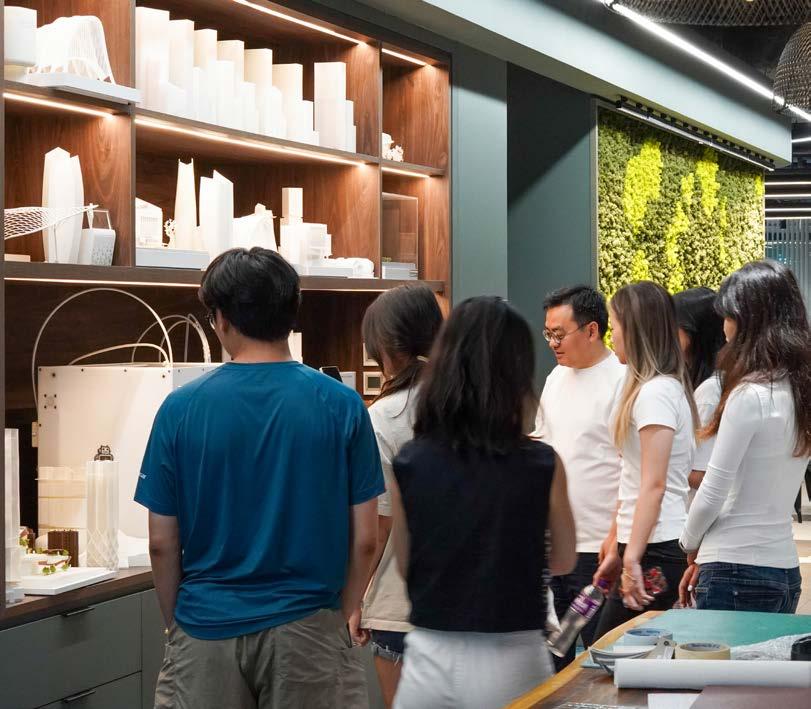
/BENOY OFFICE VISIT
Students gained insights into the operations of an interdisciplinary studio and their design approach during the visit to Benoy HK.
Teri Tsang, Director and Hong Kong
Studio Lead, introduced Benoy and presented their latest projects in the region.
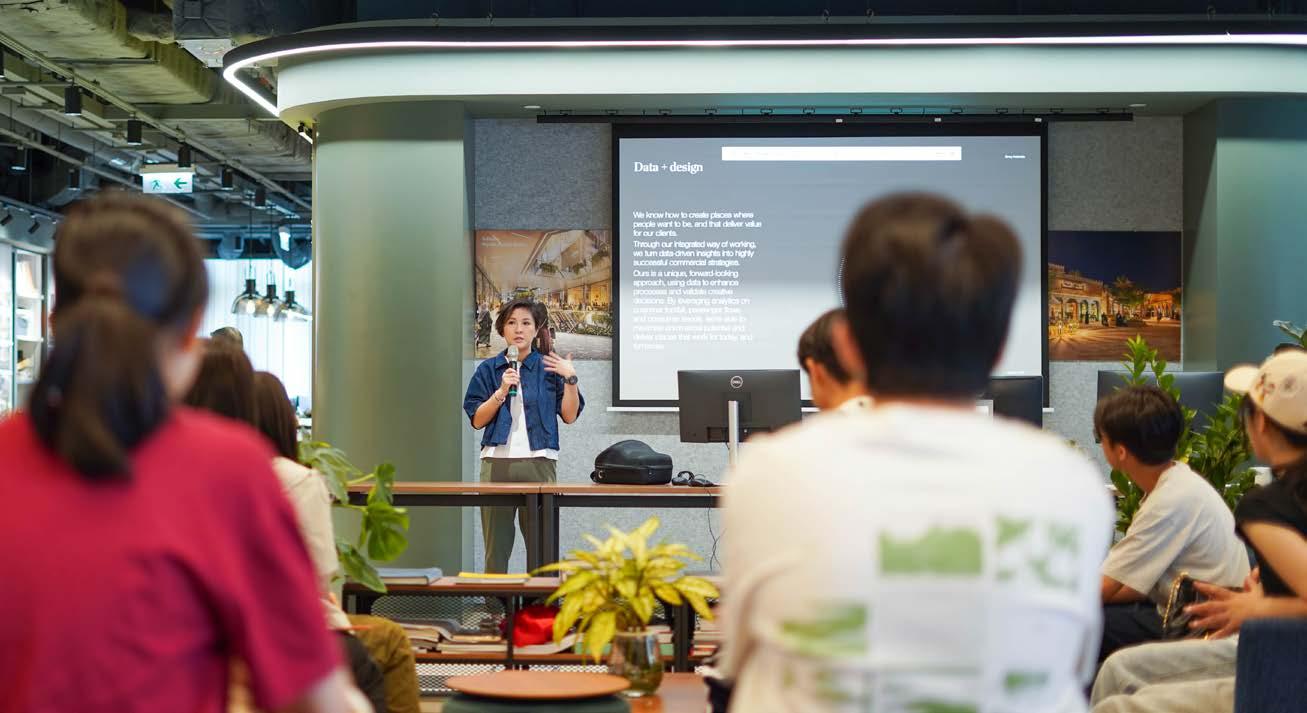
Biodiversity enhancement with After Nature, Tsuen Wan
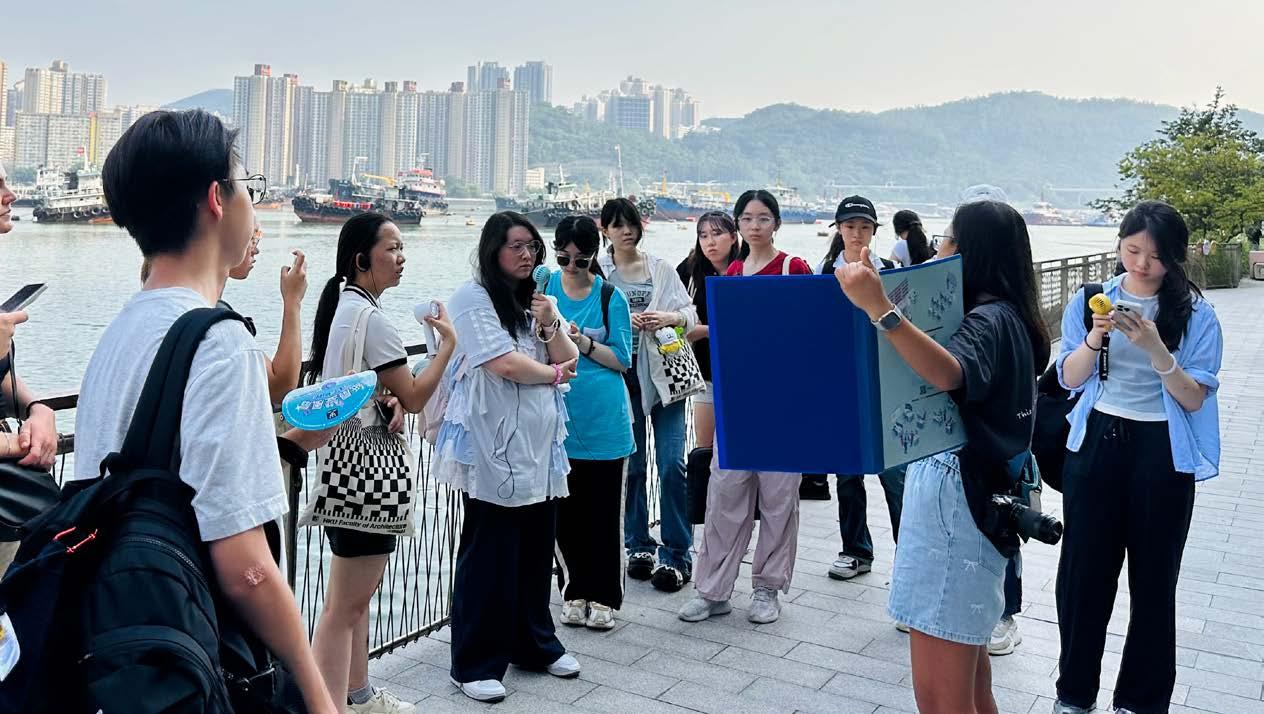
Students discovered ways to enhance biodiversity through research-driven design along shorelines with After Nature in Tsuen Wan West.
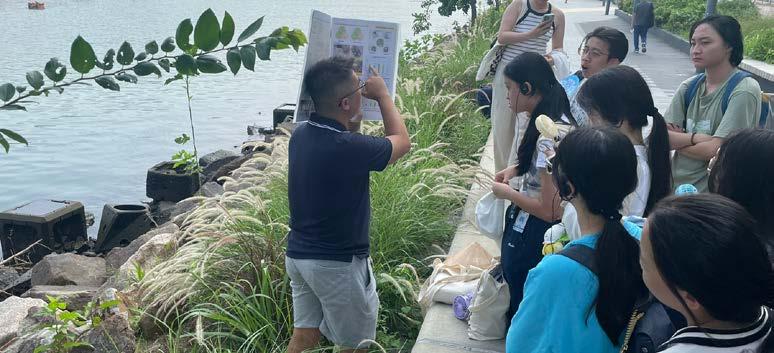
#ruralnature
/BIODIVERSITY ENHANCEMENT
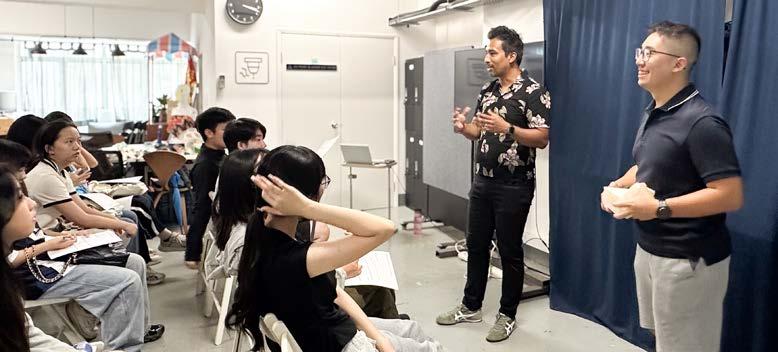
Students evidenced the efforts for conserving and regenerating living nature by visiting a protected area in Hong Kong and learnt from the local actors involved in the process.They also visited a renowned global practice where they presented, discussed and developed their design ideas, getting immersed in a workplace full of creativity.
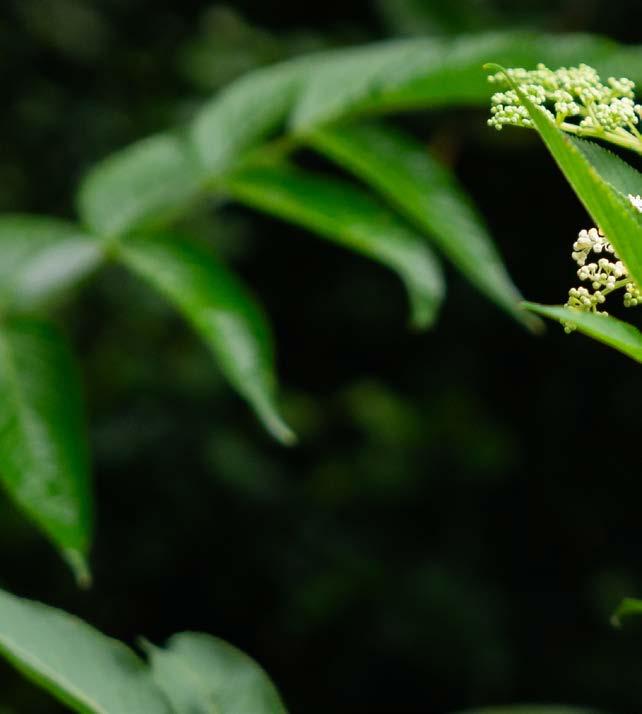
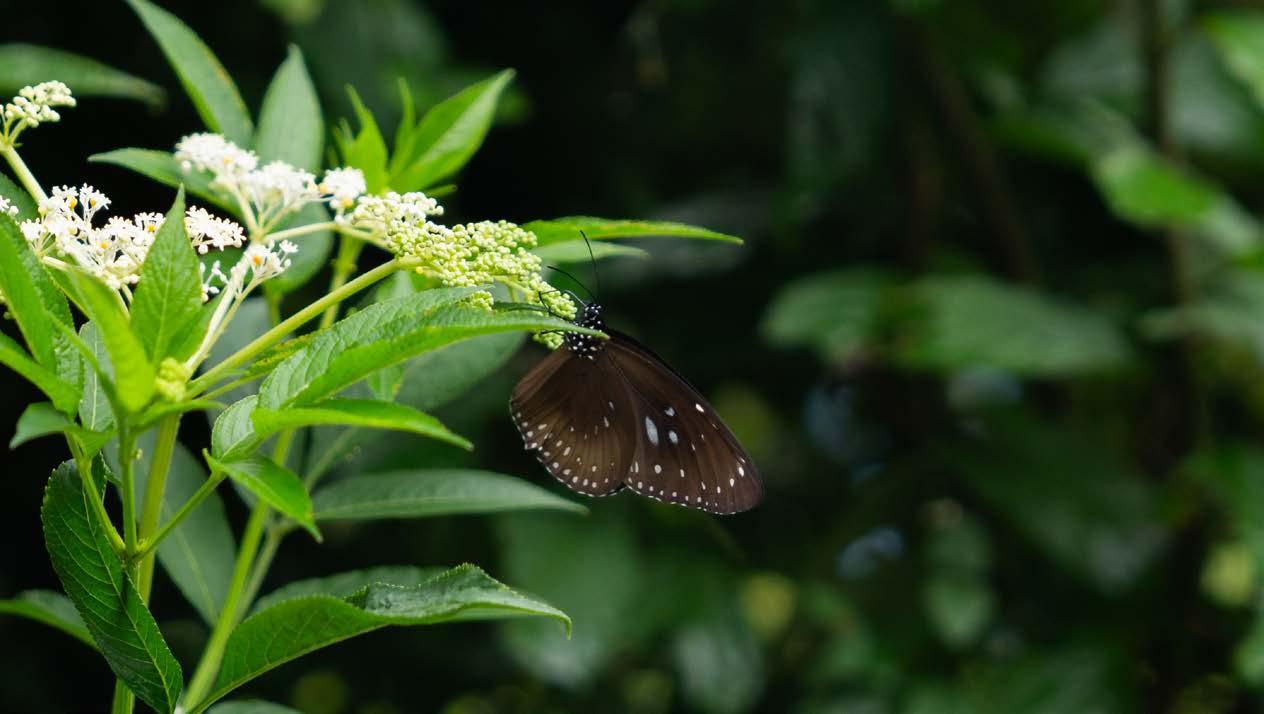
Field trip to Fung Yuen Reserve,
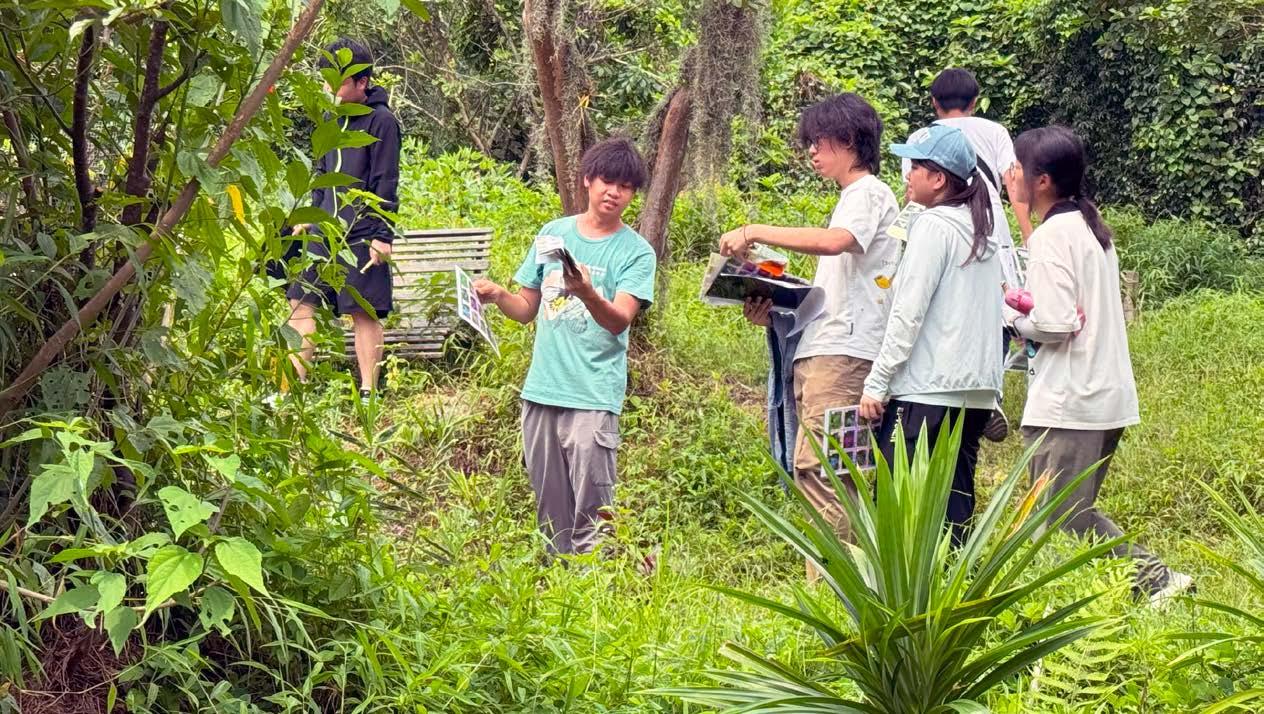
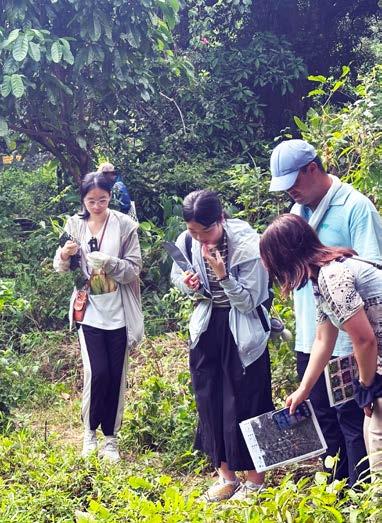
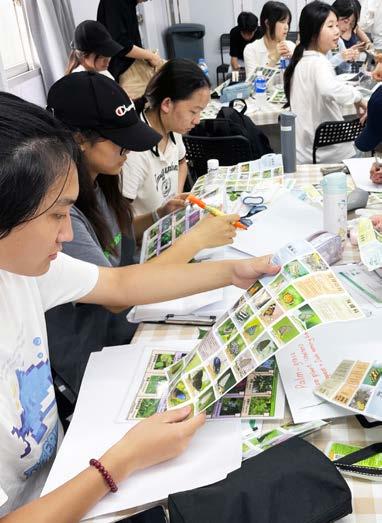
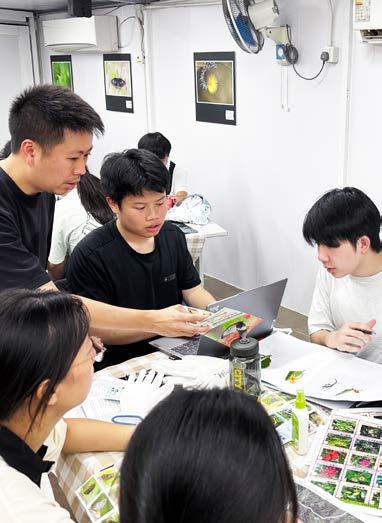
In collaboration with Fung Yuen Butterfly Reserve, this immersive learning experience touched upon aspects related to conservation, restoration, ecological value and the naturebased solutions.
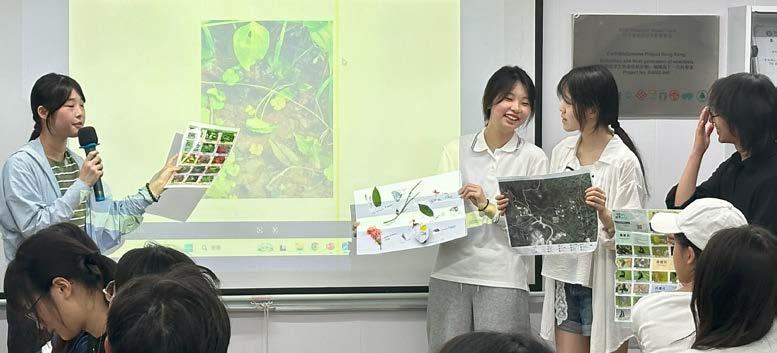
#biodiversity
/BUTTERFLY MAPPING WORKSHOP WITH HKILA + ENVIRONMENTAL ASSOCIATION
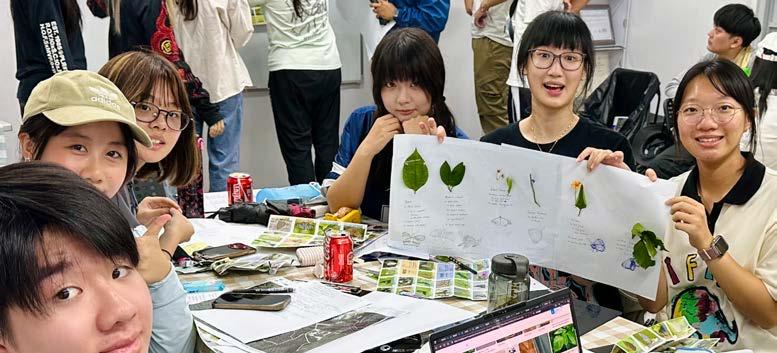
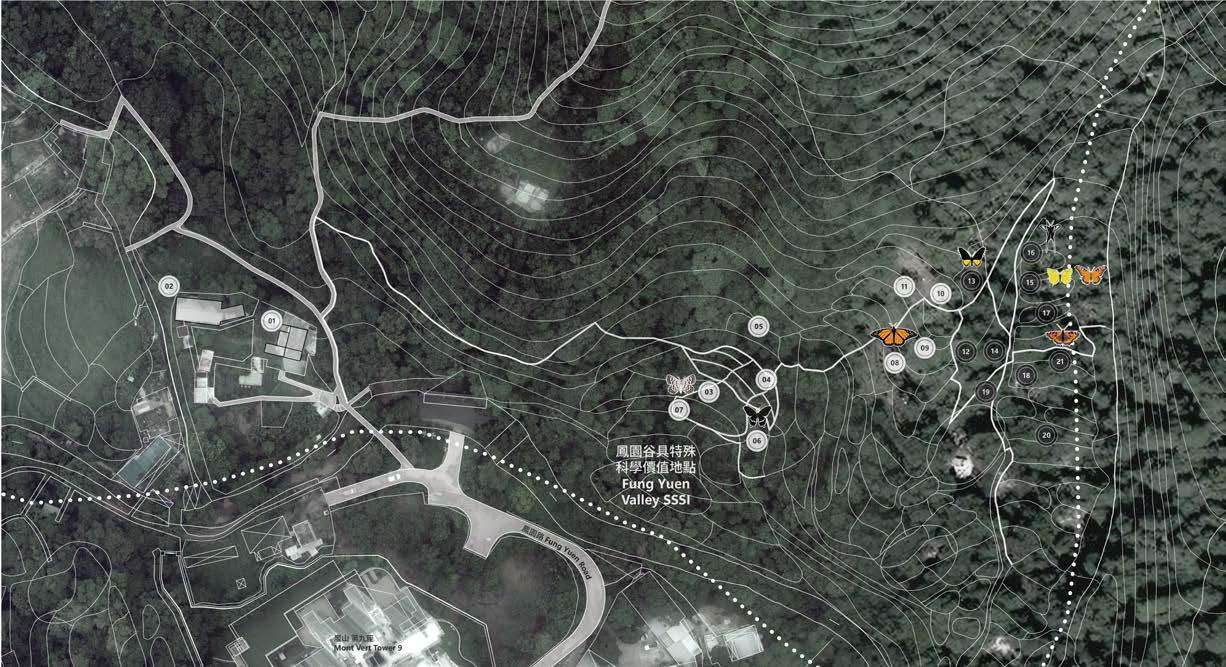
/FUNG YUEN RESERVE
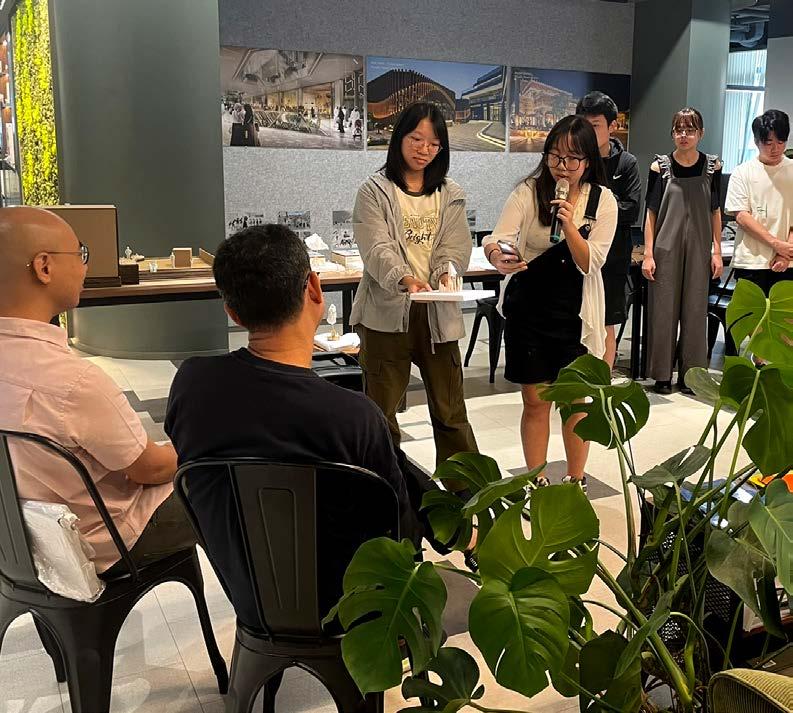
In a workshop at the offices of Benoy, students collaborated with designers with diverse backgrounds to develop the conceptual ideas for their final projects.
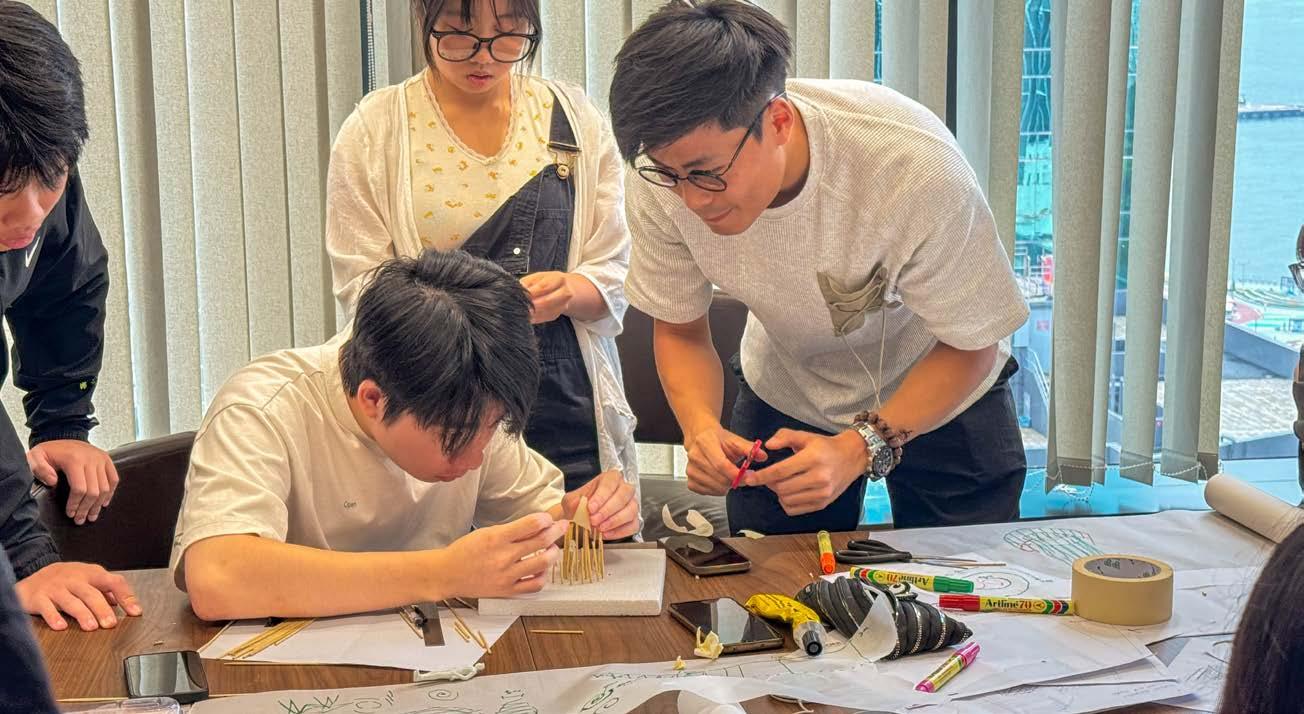
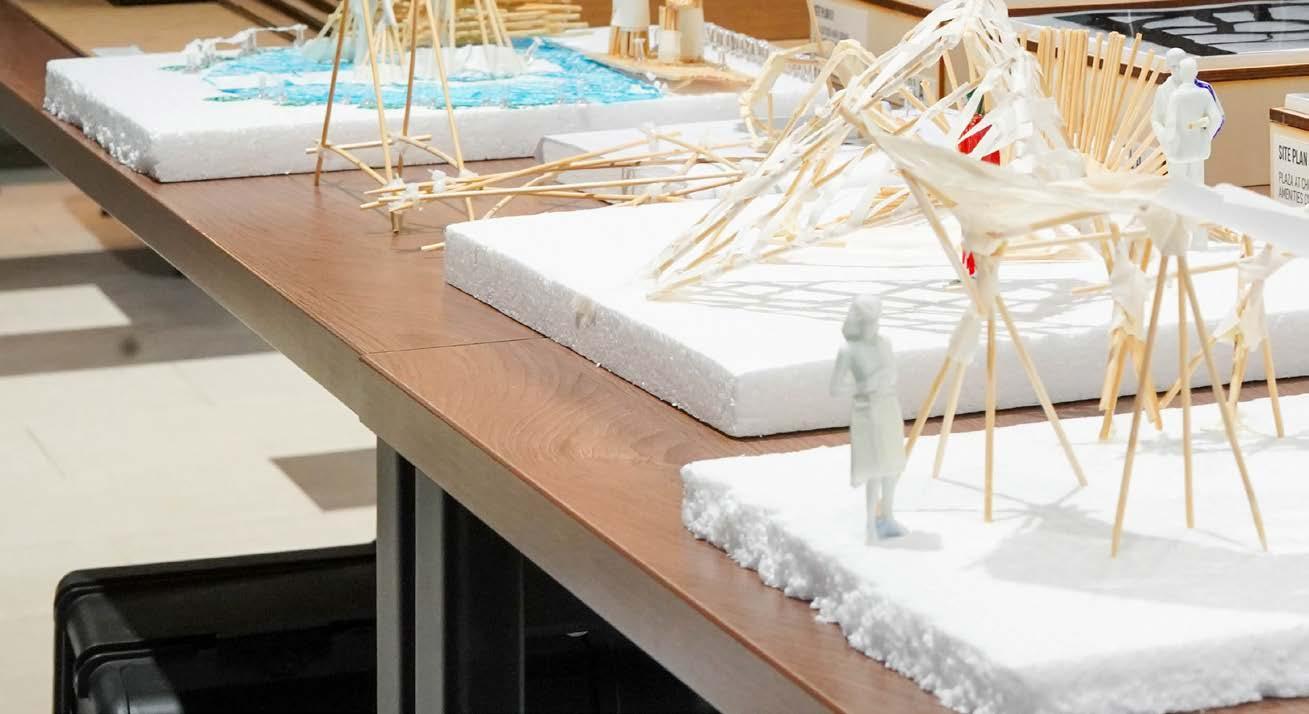

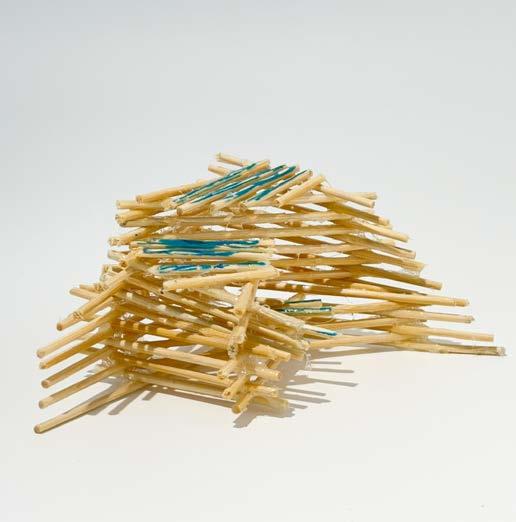
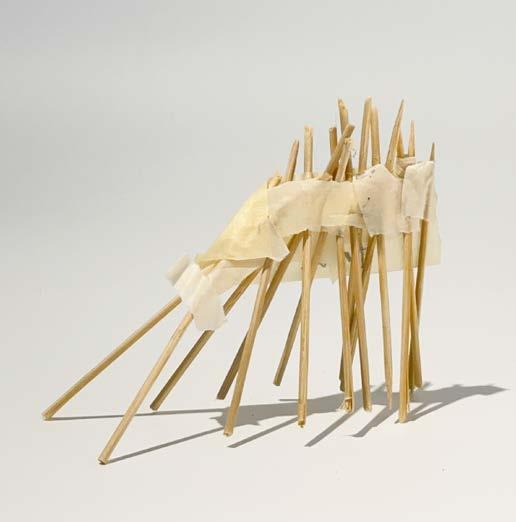
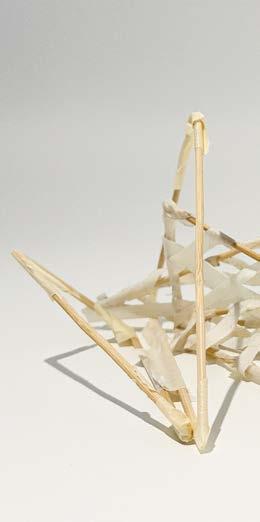
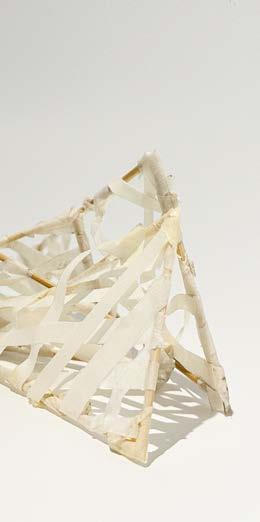

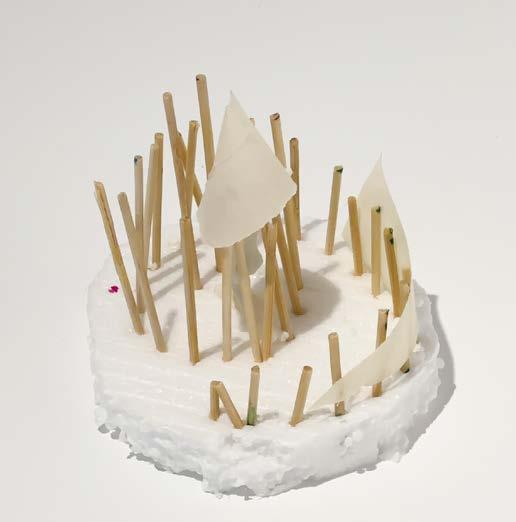
Group 4 / Palms / Group 5 / Gaia /
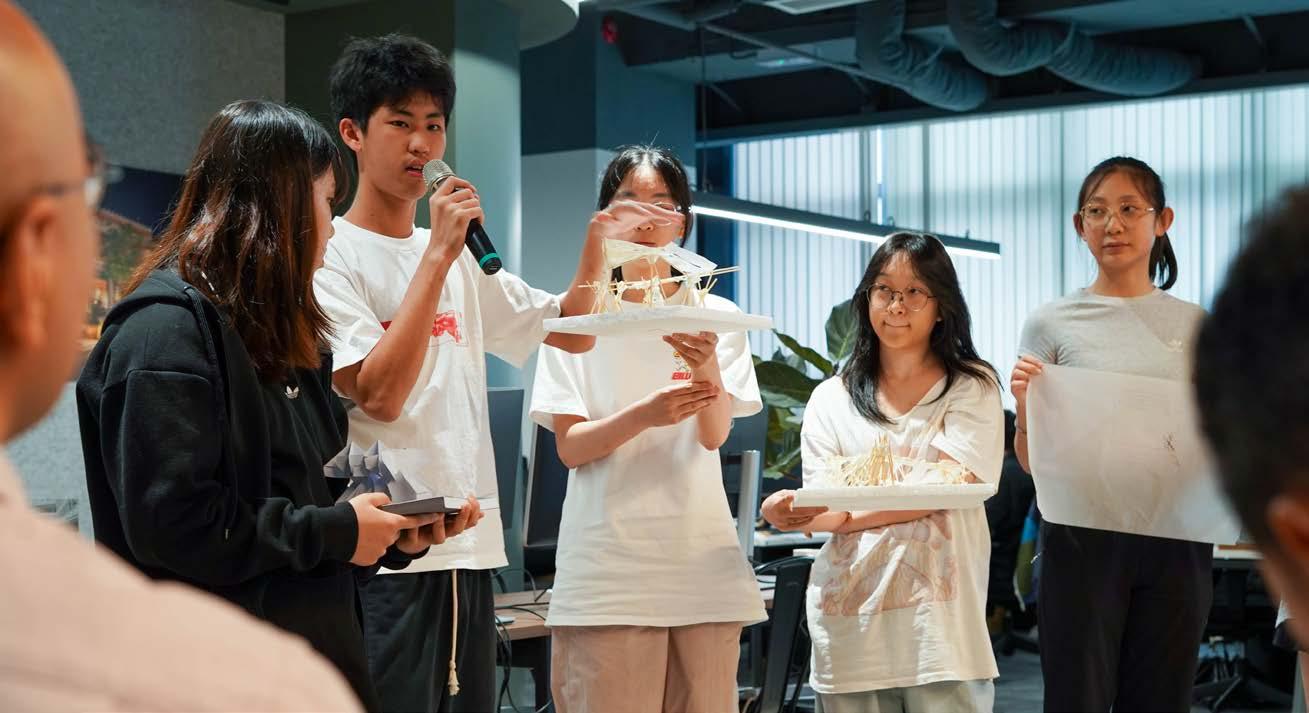

Students present their schemes at Benoy
This final module focused on the landscape design process. Active conversations and participation with experts from the field, provided the resources for getting immersed in the landscape discipline. After reflecting on their learning journey, they delved into the discipline and explored design process. Through specialized workshops on bamboo structure and craftmanship, students materialized their ideas and applied their newly acquired skills in the final project. The process culminated in a public exhibition showcasing the work developed.
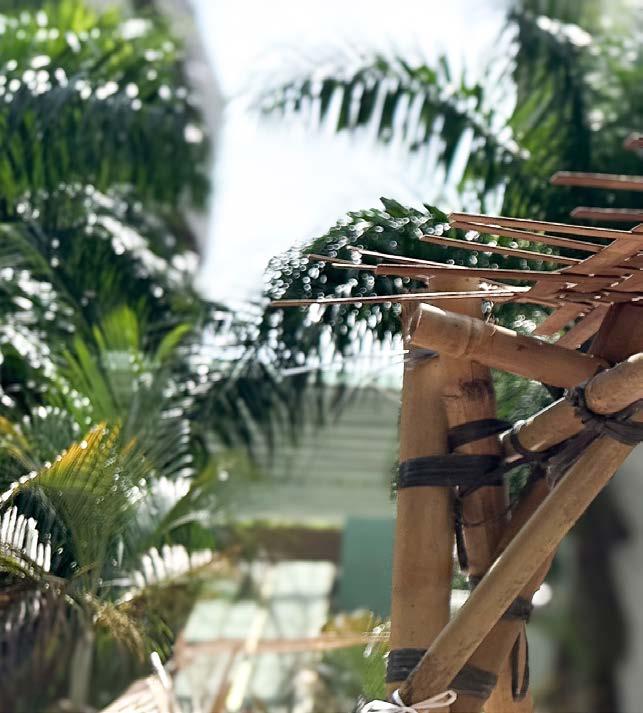
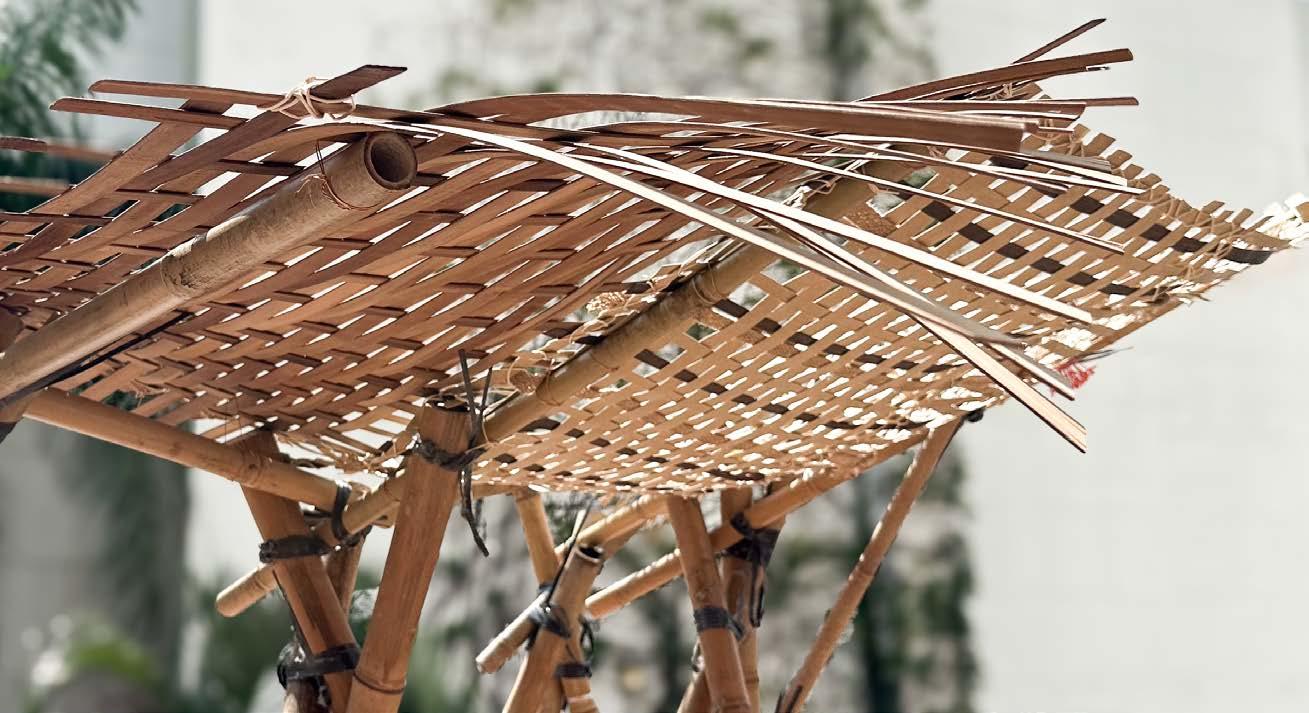
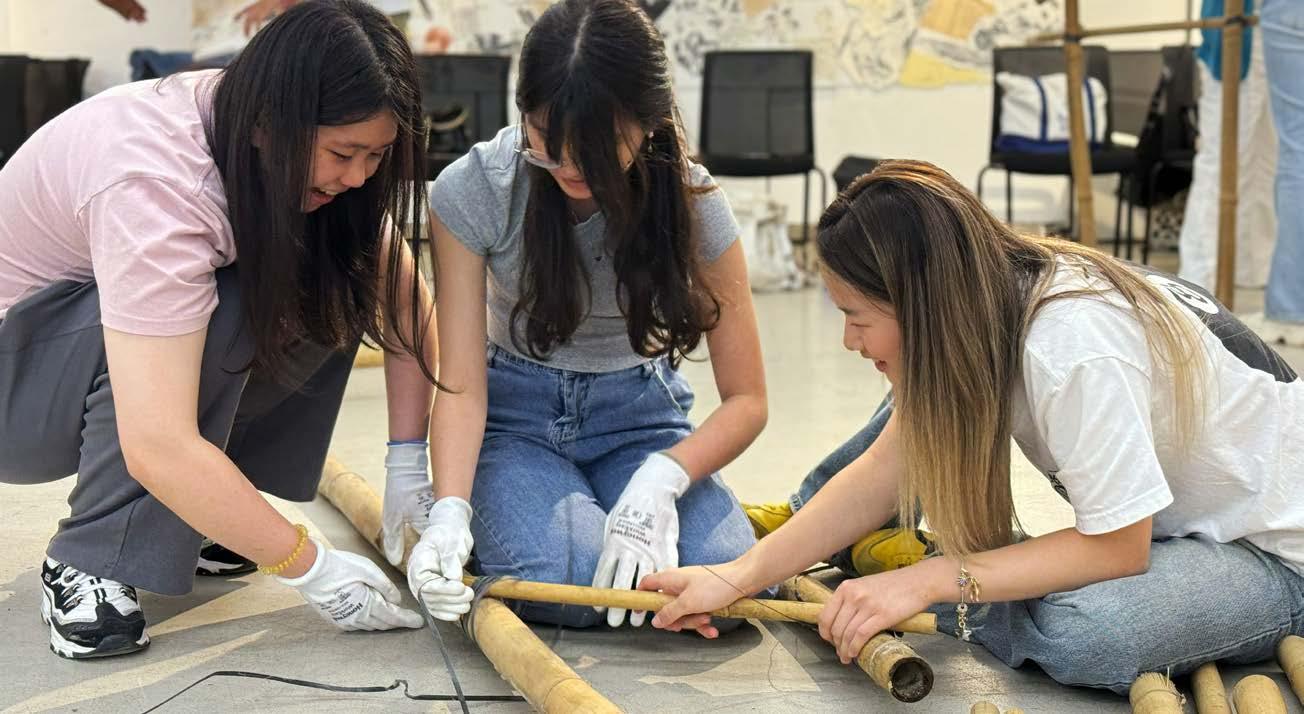
/FINAL PROJECT: ASSEMBLING LOCAL
Bamboo generations worked with the students on the technical aspects of their proposals to make optimal use of the materials and consolidate stable objects and a local artist led a workshop on bamboo weaving.
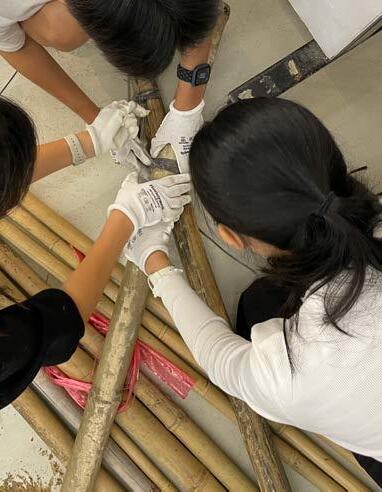
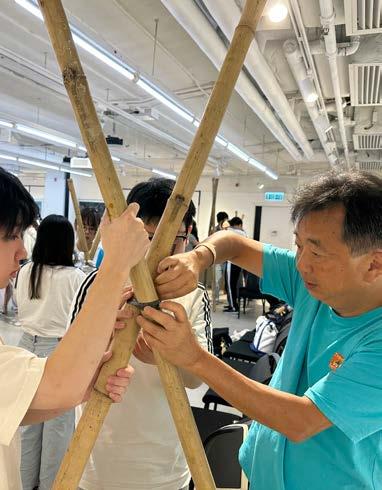
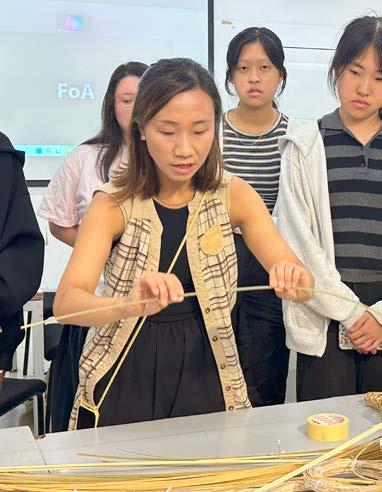
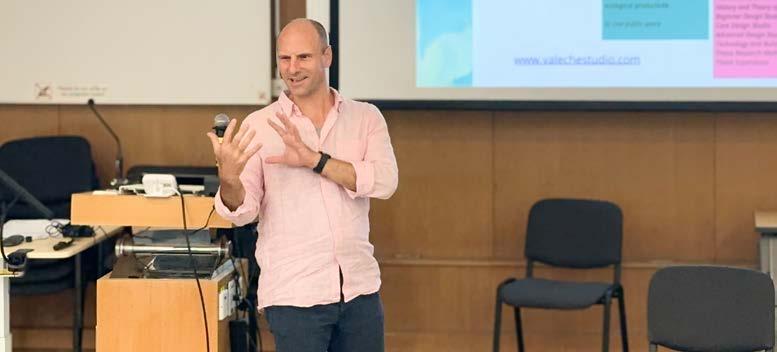
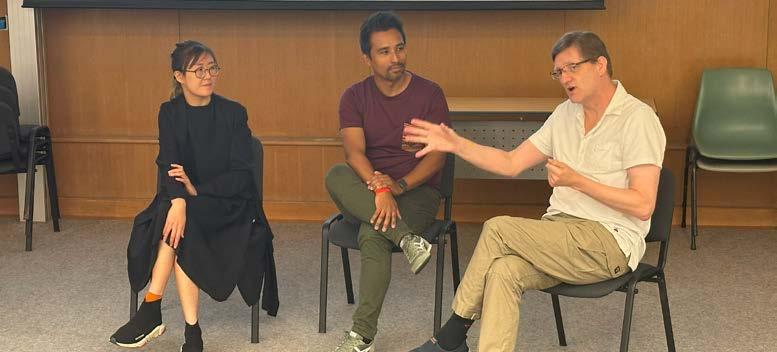
Talks during this module adderessed the trajectories and current trends of the landscape discipline. Also, discussions touched upon the existing programmes and research-led design approach of the Division of Landscape Architecture at HKU.
DLA Introduction by Ivan
From DLA to Practice by Rose Tan (Otherland) and Mathew Pryor (DLA).
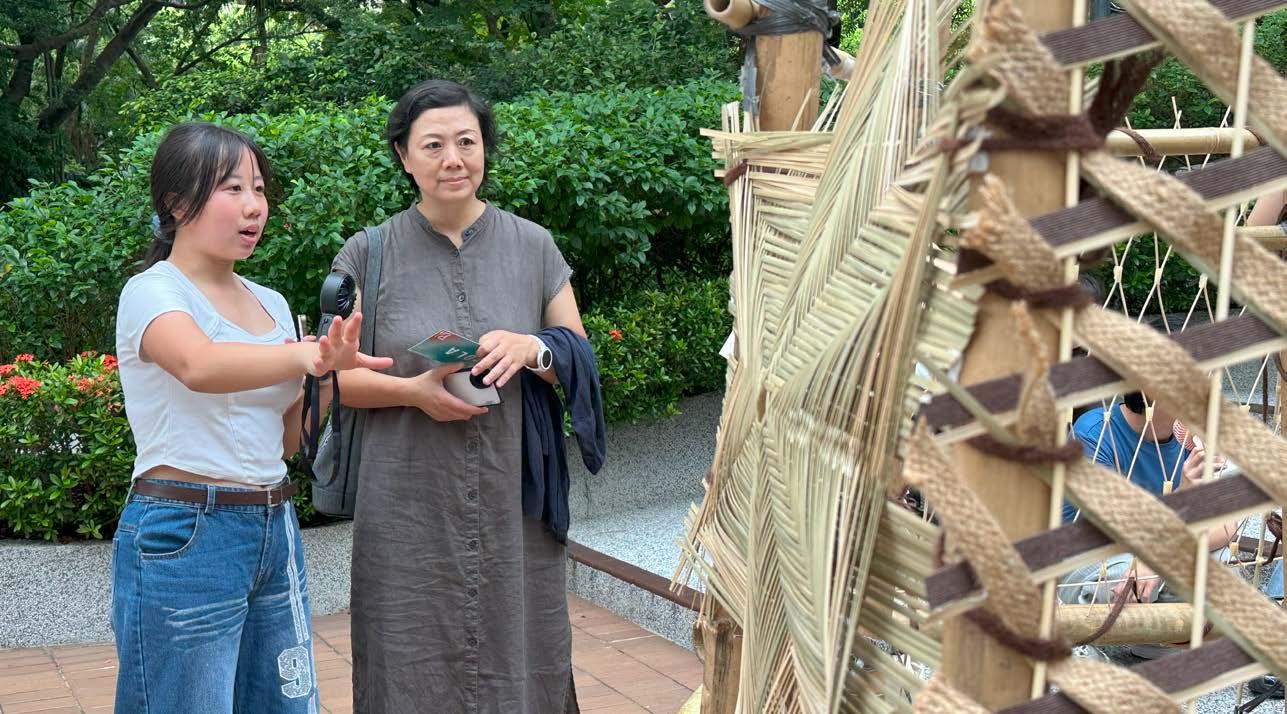
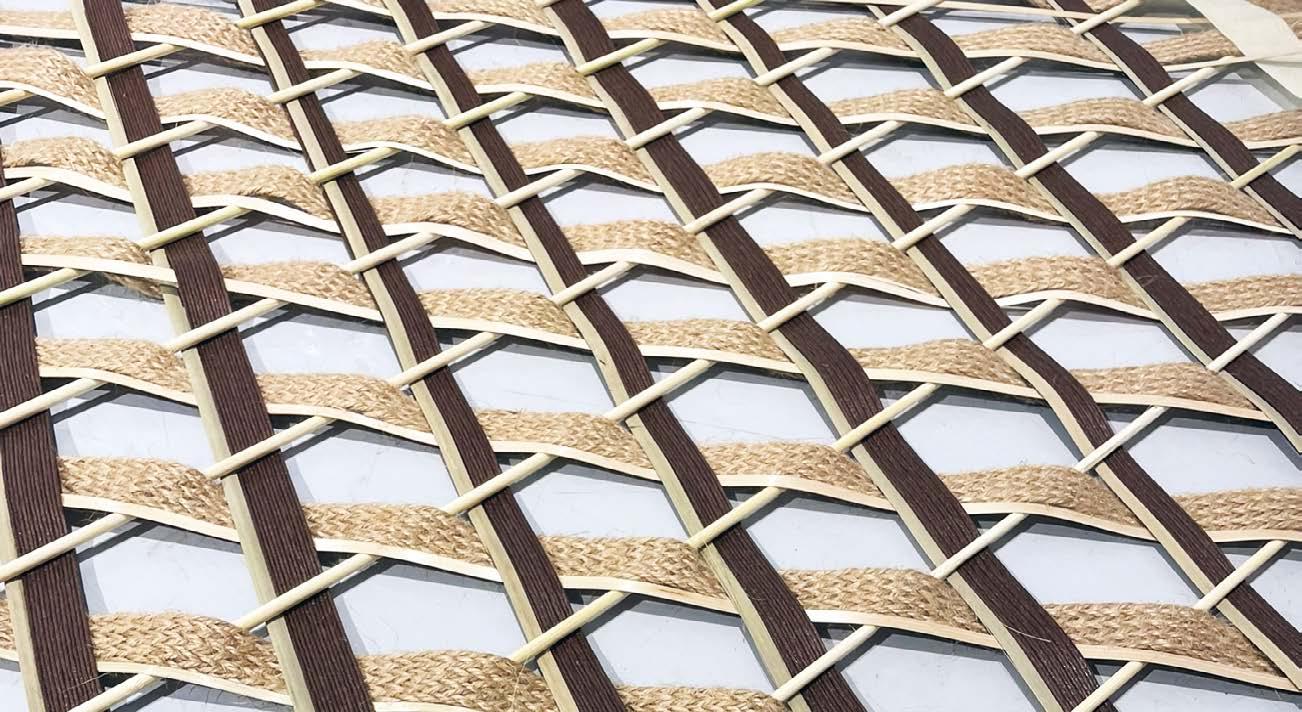
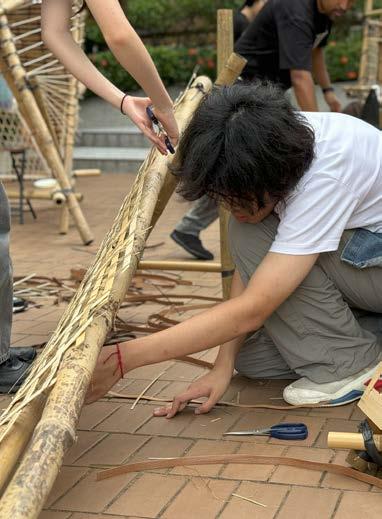
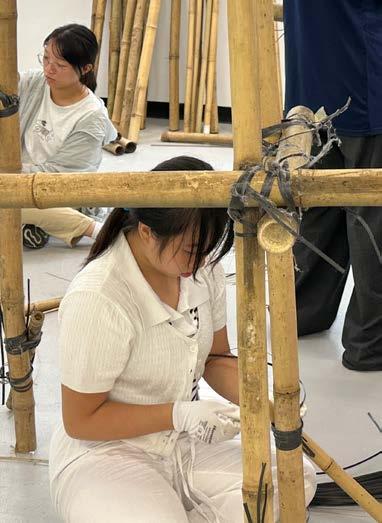
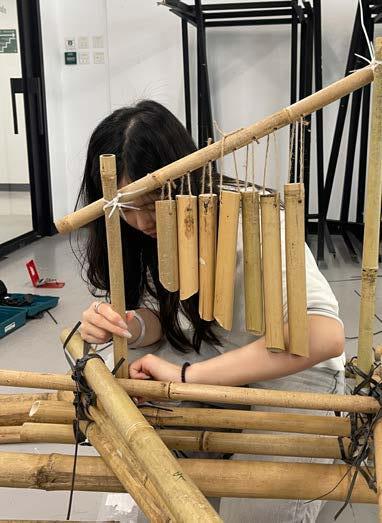
One design project is envisioned and developed by the students and instructors during the CDLA. Productive active sessions, discussions and workshops in conjunction with the new skills and concepts from the participants, created unique bamboo installations to be showcased in a final exhibition. Several sessions were destined to gradually consolidate the built final outcome through an interative and reflective design process.
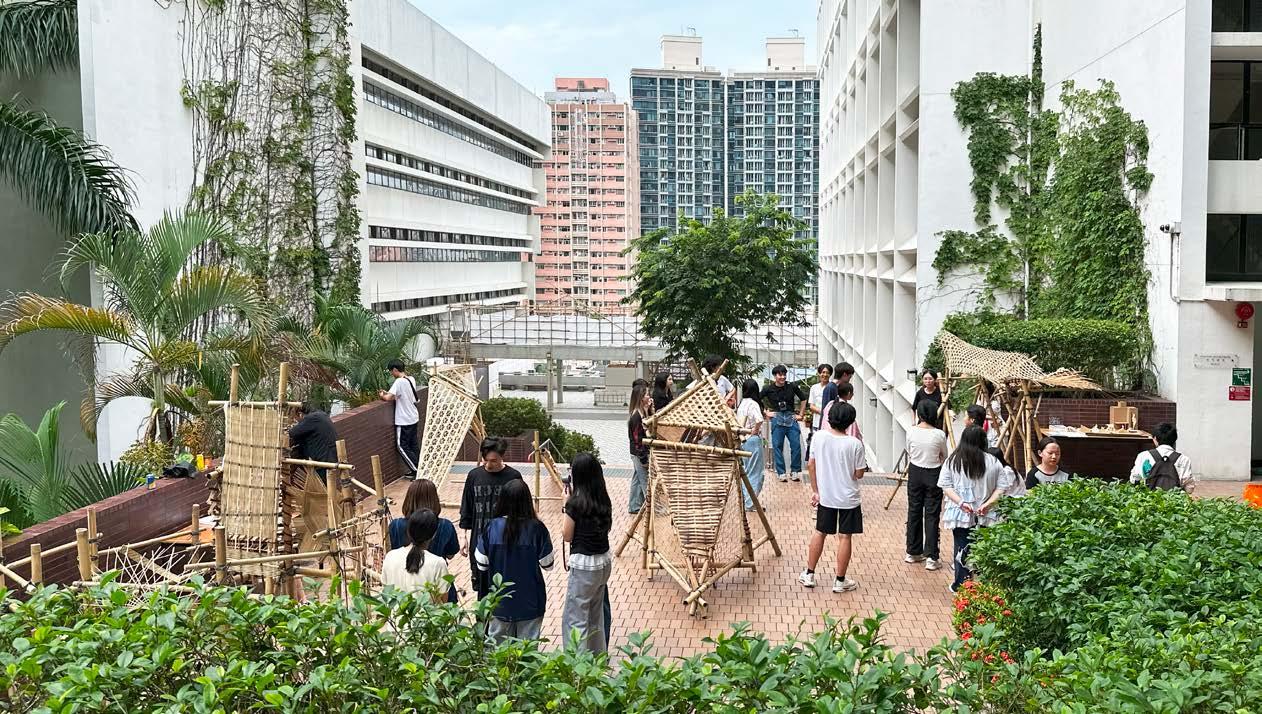
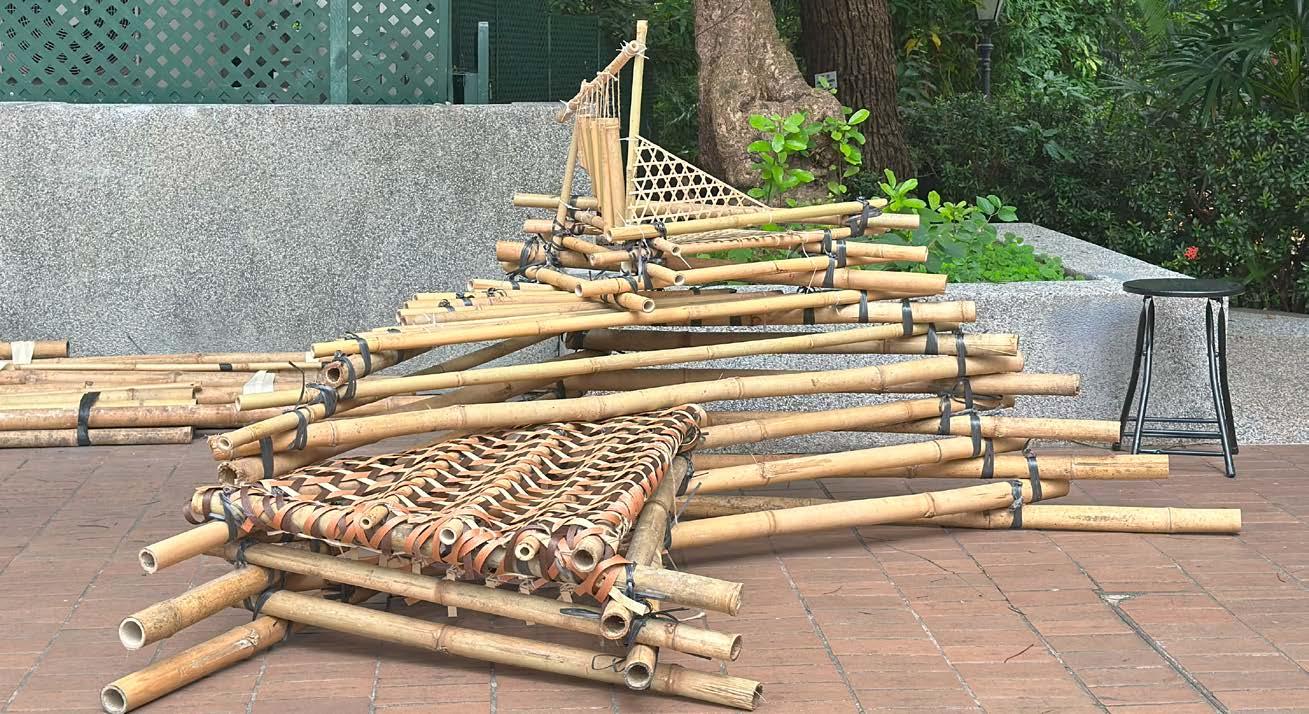
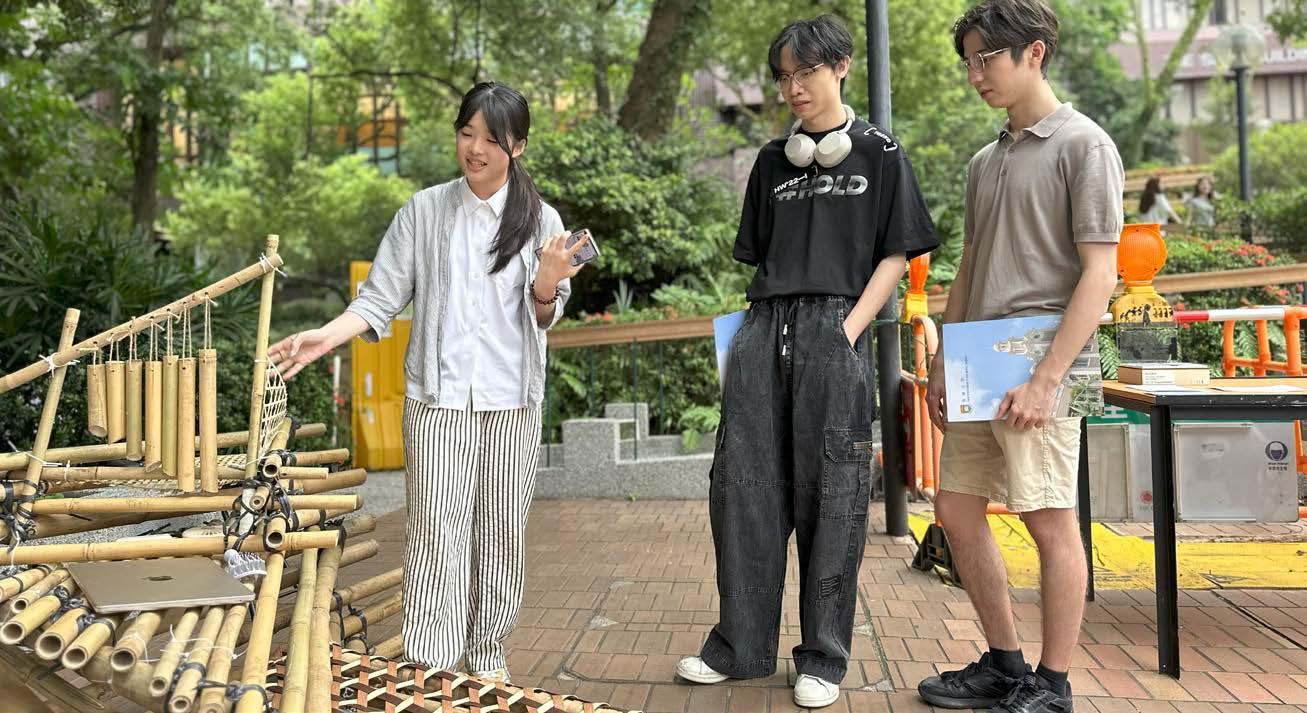
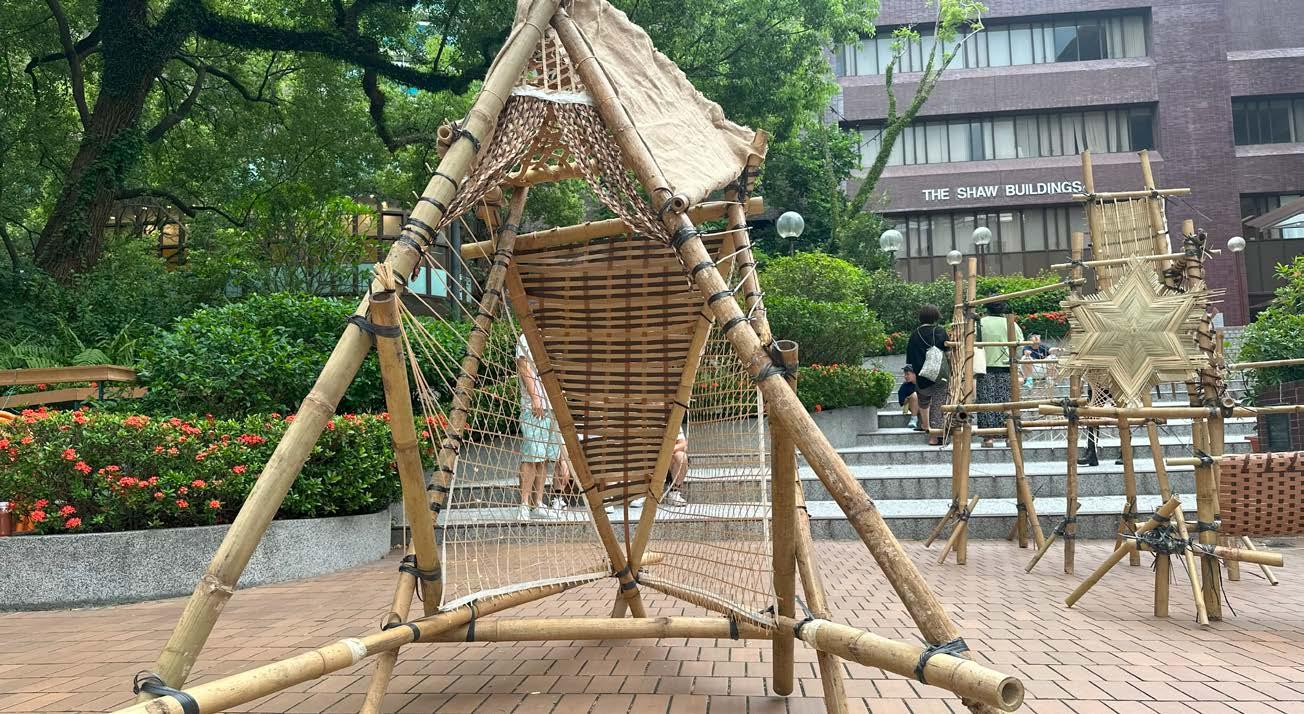
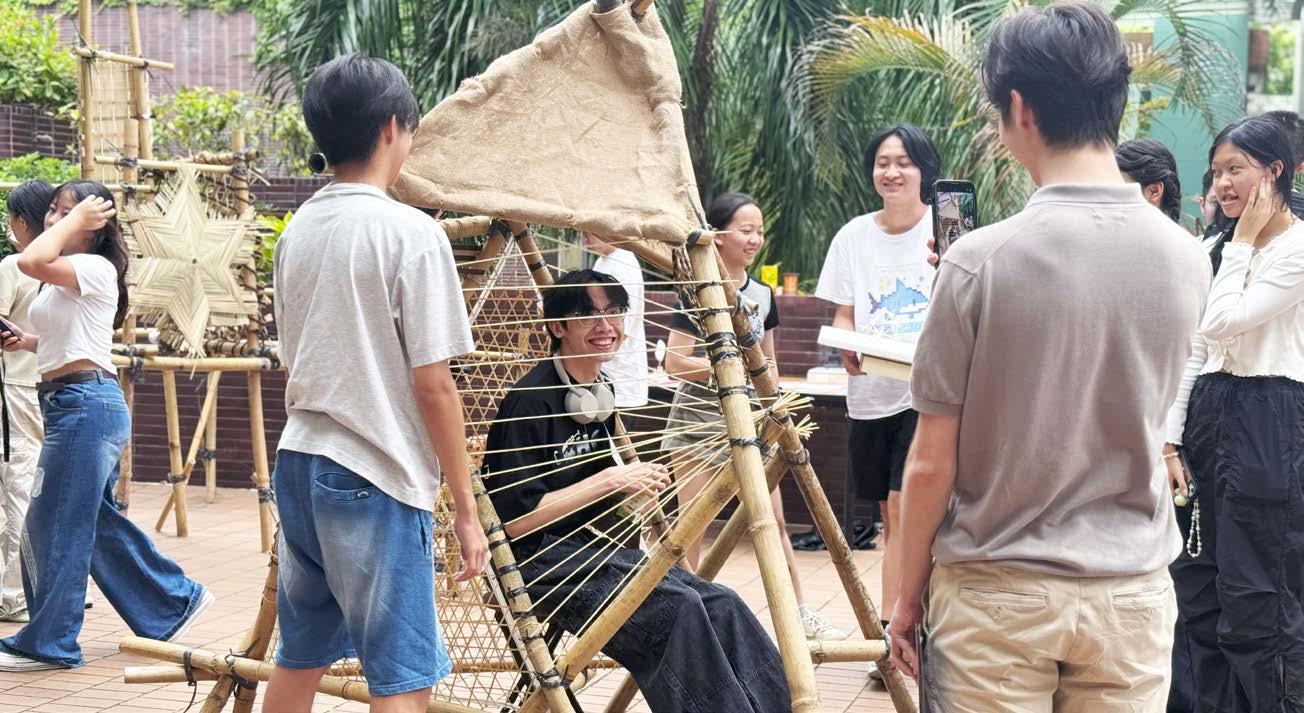
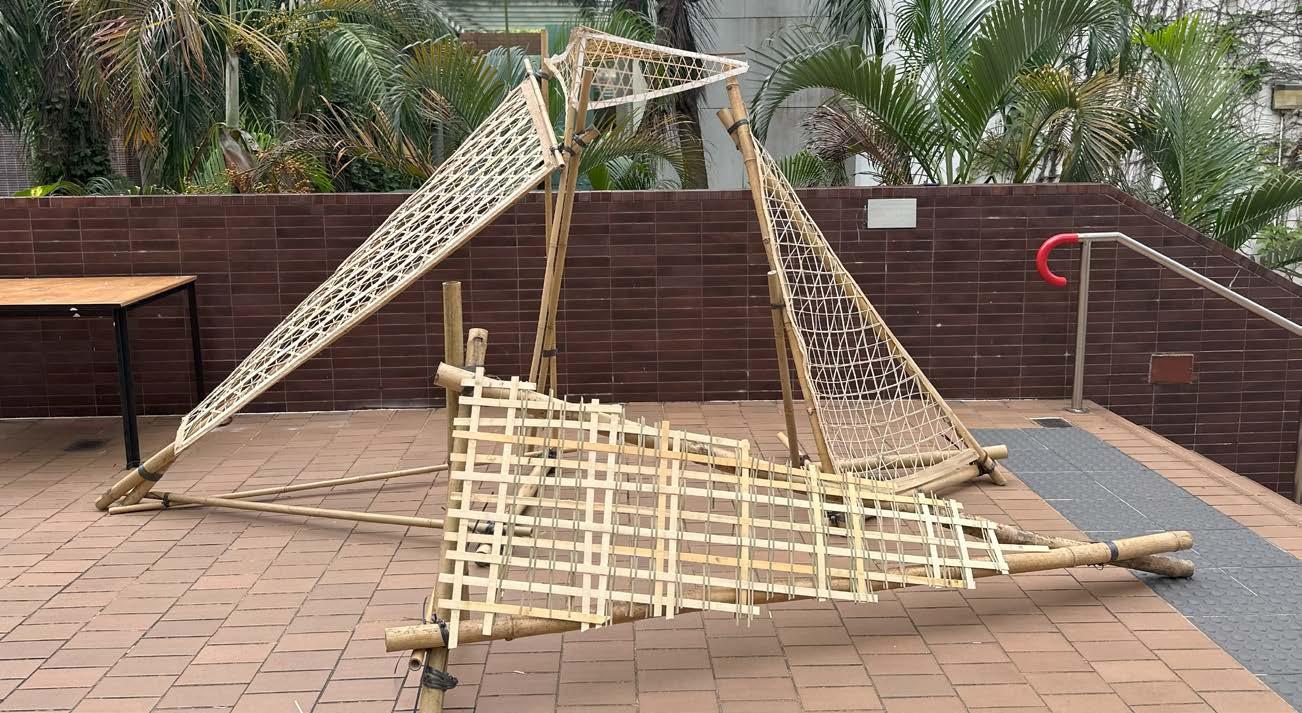
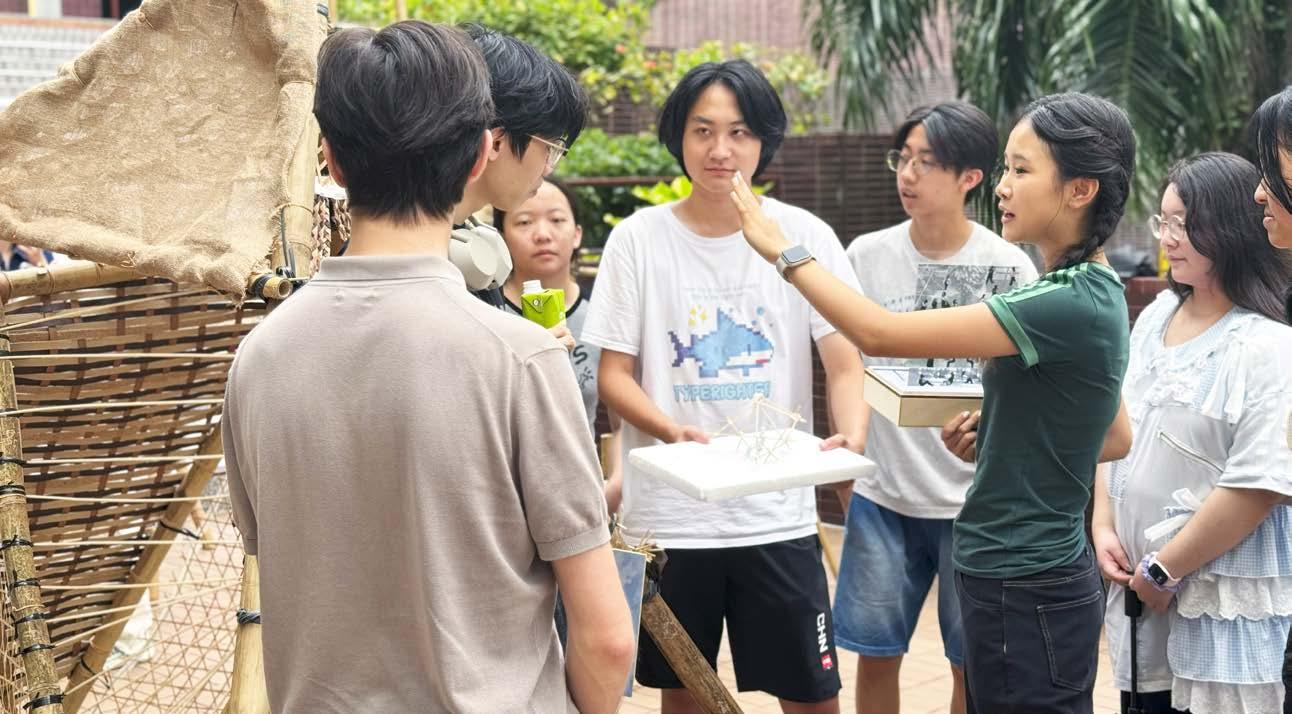
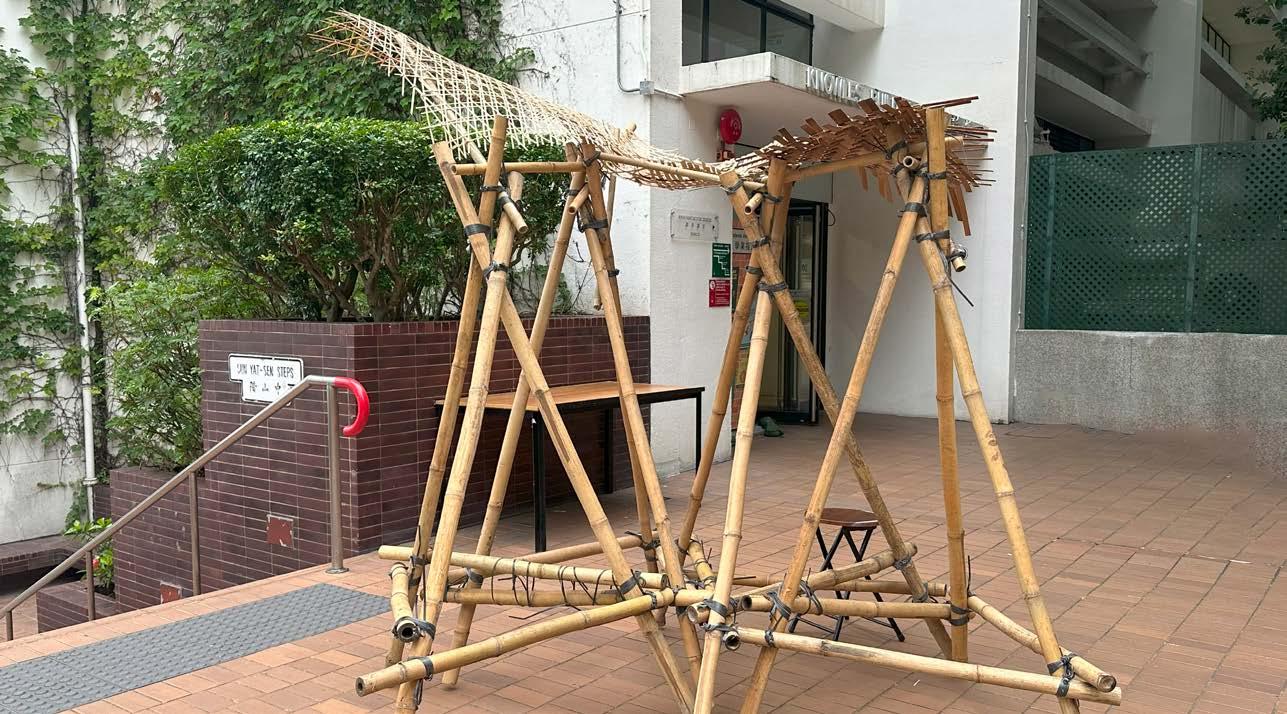
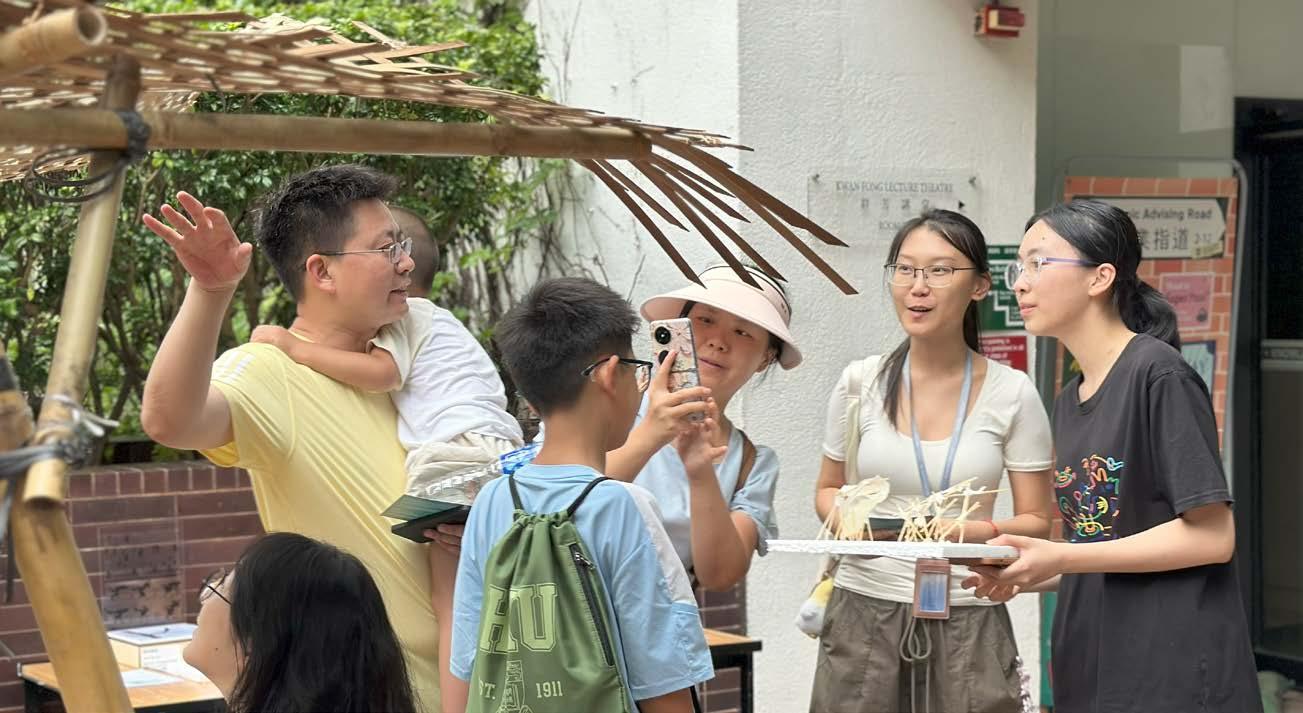
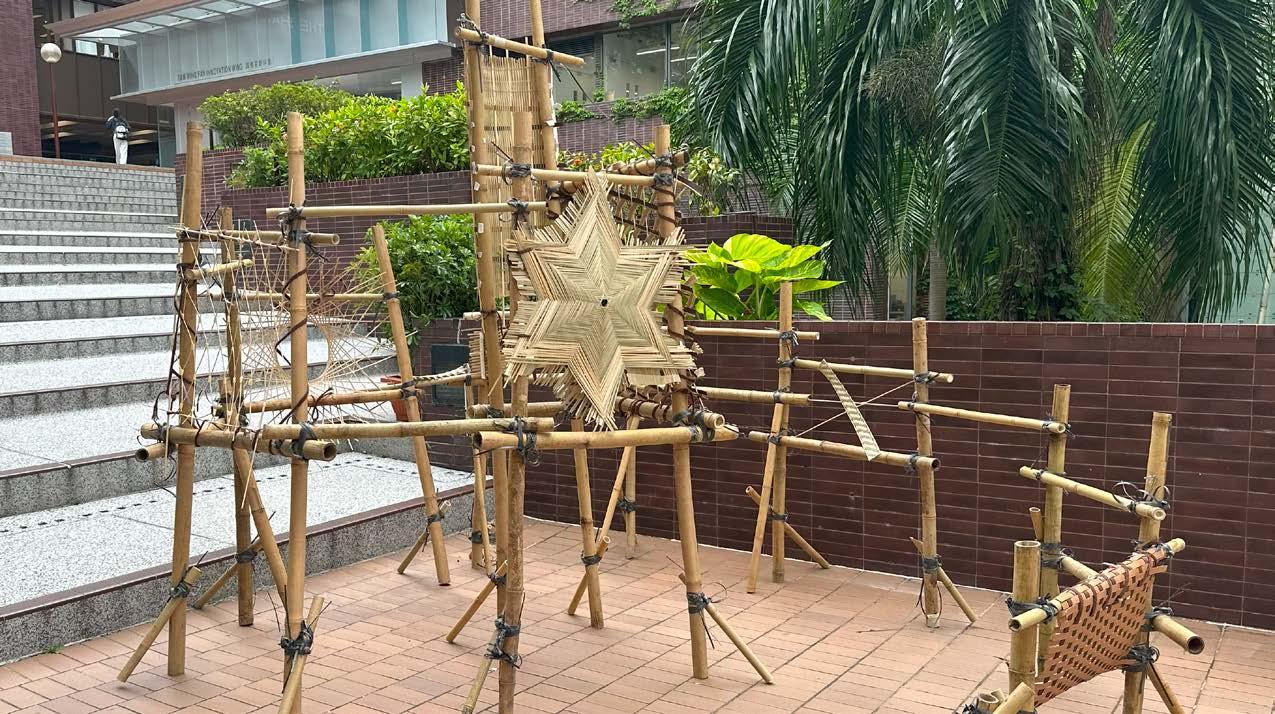
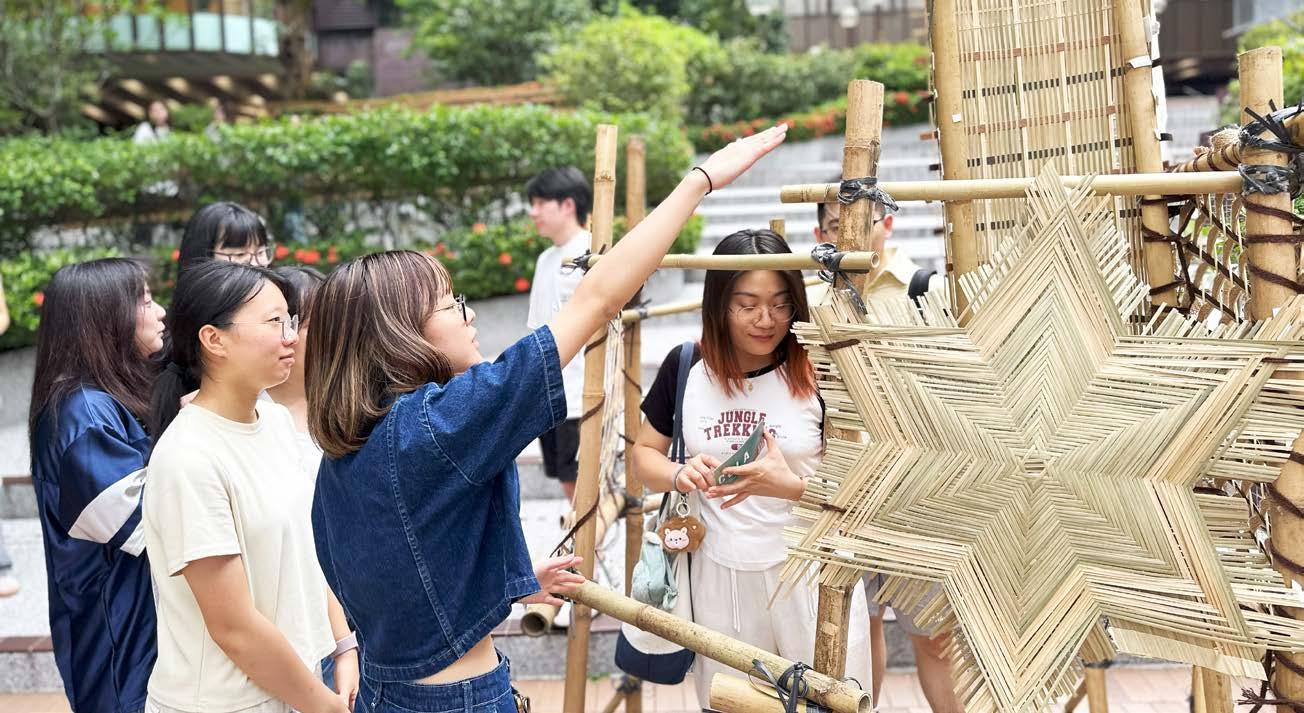
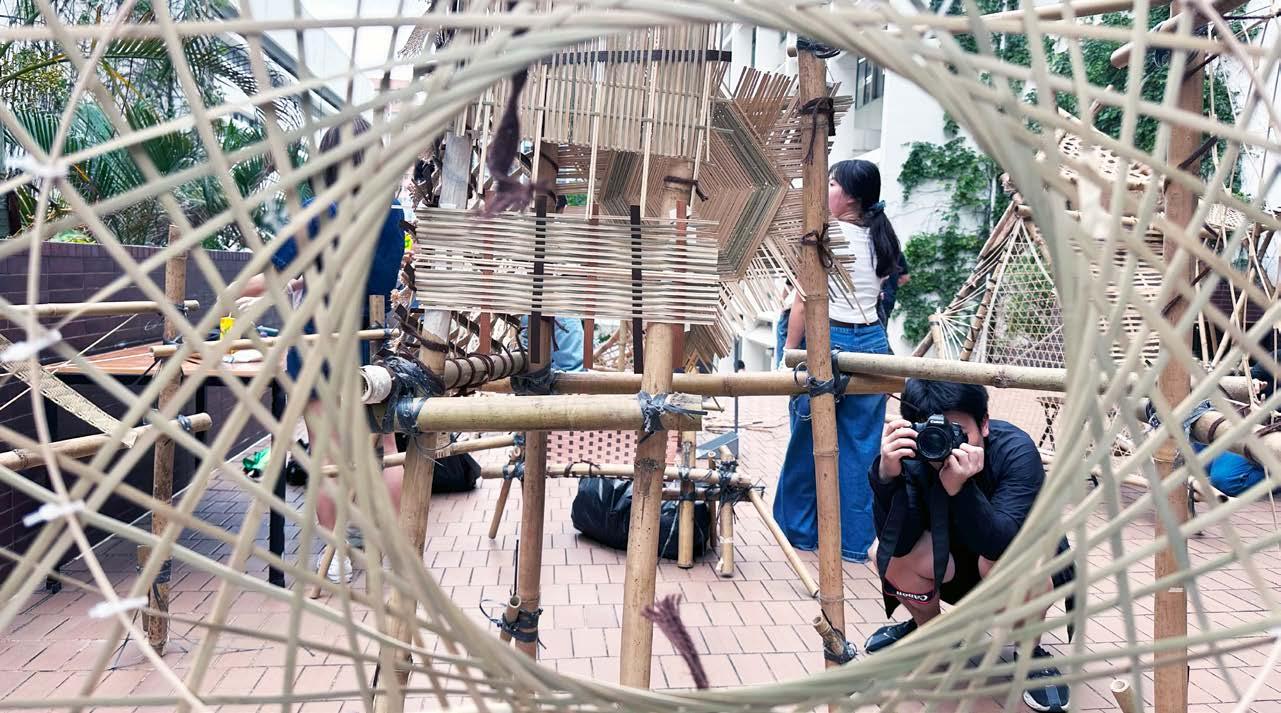


DIRECTOR. Francisco D. Cevallos Barragan COORDINATOR. Olly, Liu Yapeng
ASSISTANTS. Ban, Han
Frankie, Wong Lok Fan
Stephanie, Chen King-in
Vicki, Liu Jiani

The CDLA offers a multicultural and collaborative experience where students learn from multiple disciplines. Artists, practitioners and craftswomen were involved.
In the CDLA2025, Benoy, The Fung Yuen Butterfly Reserve (Environmental Association), After Nature, The Nature Conservancy, HKILA, joined efforts in the making of this learning experience.


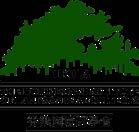
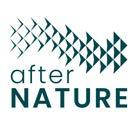
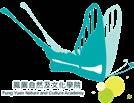





Our deepest appreciation and gratitude go out to everyone involved in the CDLA 2025. Special thanks to the HKU Summer Institute (HKUSI), alumni Rose Tan (Otherland), Kate Lau (2 Square Metres), and Olgierd Nikta (Atkin Dreiglo). The local institutions
The Hong Kong Institute of Landscape Architecture, After Nature, The Nature Conservacy, Fung Yuen Butterfly Reserve, Bamboo Generations and Cindy Tai, for dedicating their time to enrich this learning experience.
We also extend our heartfelt thanks to the incredible team at Benoy Hong Kong for opening the doors of their vibrant and creative offices and share with our students.
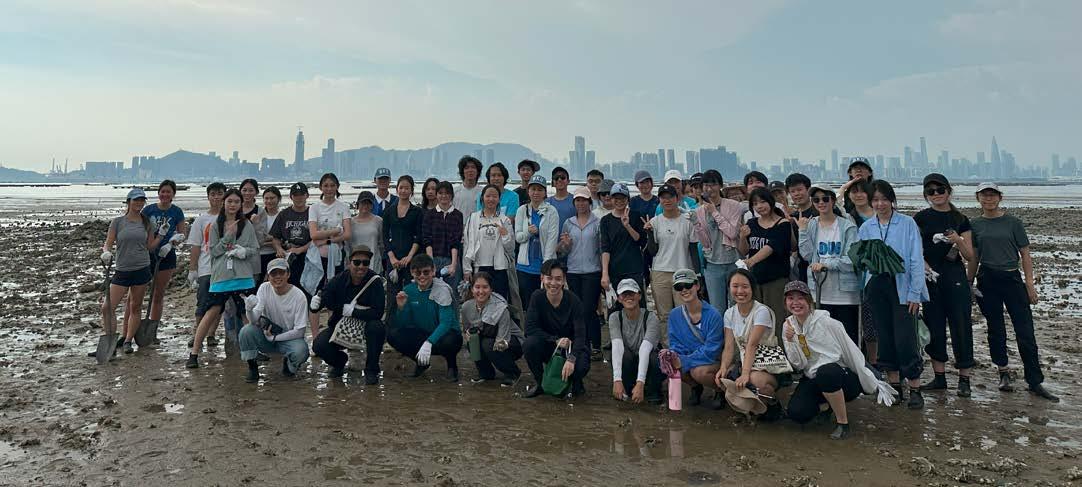
AGATHA CHEUK
ALYSSA LISHAN WOO
ANGELA REN
CHENGHAN XIA
CHEUK SUN ANDERS YIP
CHI LAM HO
EVA SHEN
HAO FENG
HO LAAM CHUNG
HONG XI LIU
JIAYI LI
JINGYI XIA
KEYING CHEN
LEANNA YUE LI
LETONG YANG
LIHAO ZHANG
MARCUS IAN LAU
MEGAN CHEN
PENGCHENG ZHU
RACHELLE TSZ YAU
CHEONG
REMI YOKOI
SHANGHENG LI
SIU YU SU
SUYANG ZHAO
XIRAN WANG
YAQI CHEN
YAWEN GUAN
YIHAN ZHOU
YIJIN LI
YIXUAN CHU
YIXUAN ZHANG
YUA NAGASHIMA
ZIRUI ZHANG


PLANNING AND PRODUCTION Francisco D. Cevallos Barragan
WRITING & EDITING Francisco D. Cevallos Barragan and Vicki, Liu Jiani
No portion of this book may be reproduced in any form or by any electronic or mechanical means without permissions in writing from the copyright holder.
Manufactured in Hong Kong
First Edition: September 2025
1st Printing
Published by the Division of Landscape Architecture, Faculty of Architecture
Printed by the Printing Shop on 4th Floor at the Knowles Building
The University of Hong Kong, Pokfulam Road, Hong Kong
For questions, concerns or comments, please contact: landscape@hku.hk
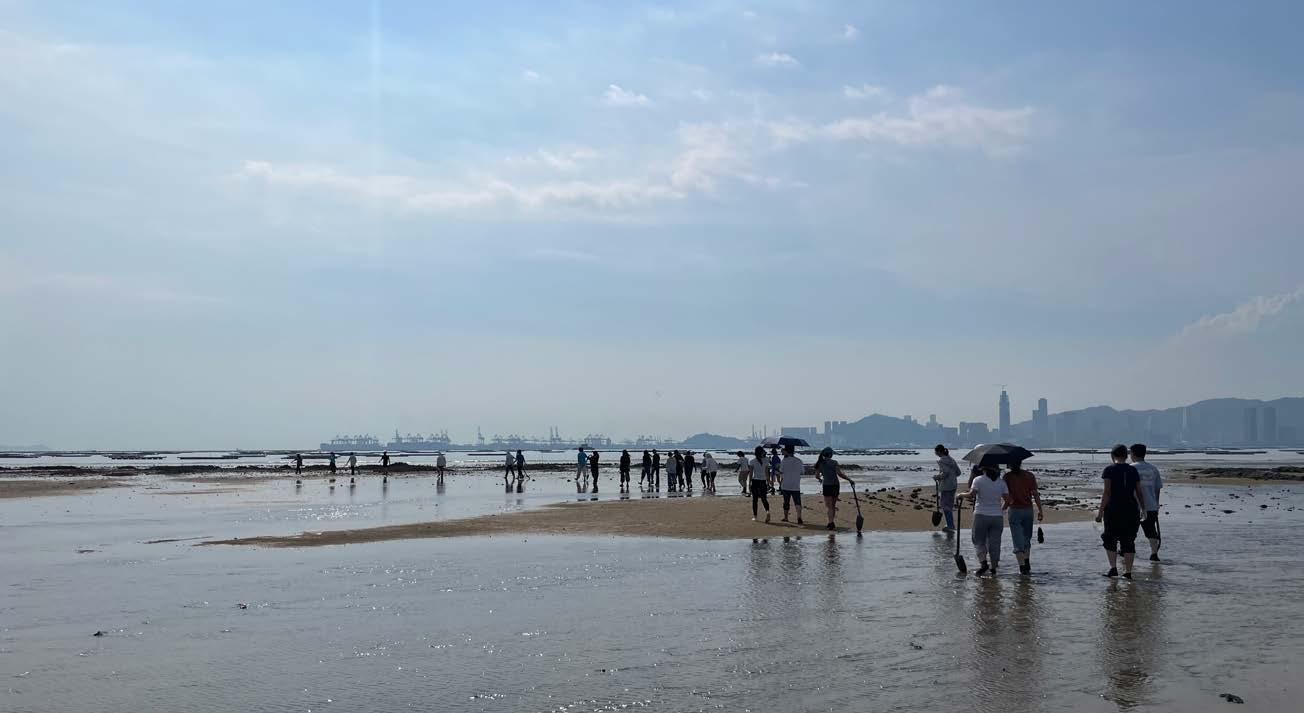

Career Discovery in Landscape Architecture